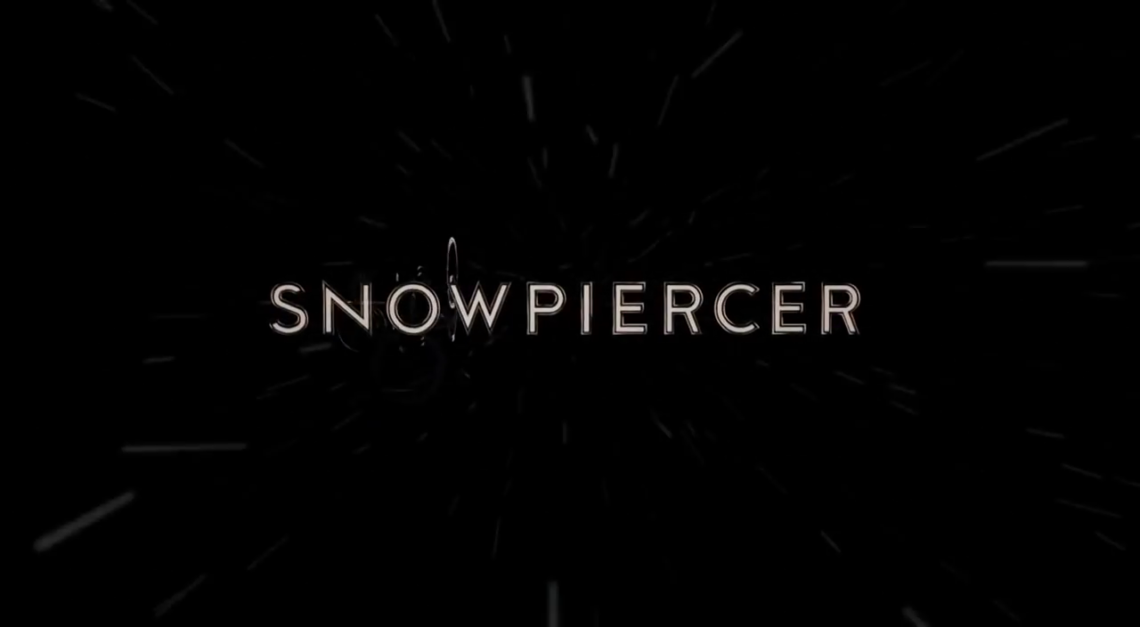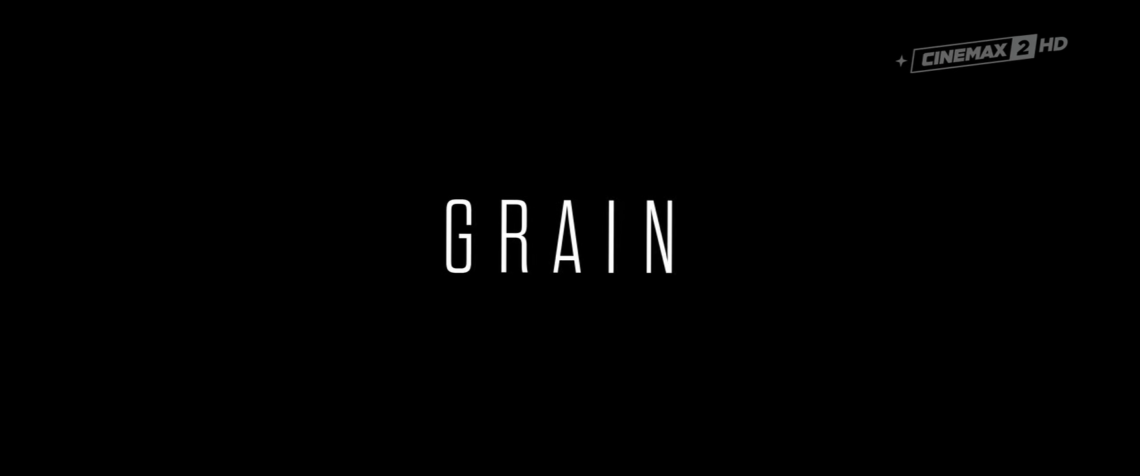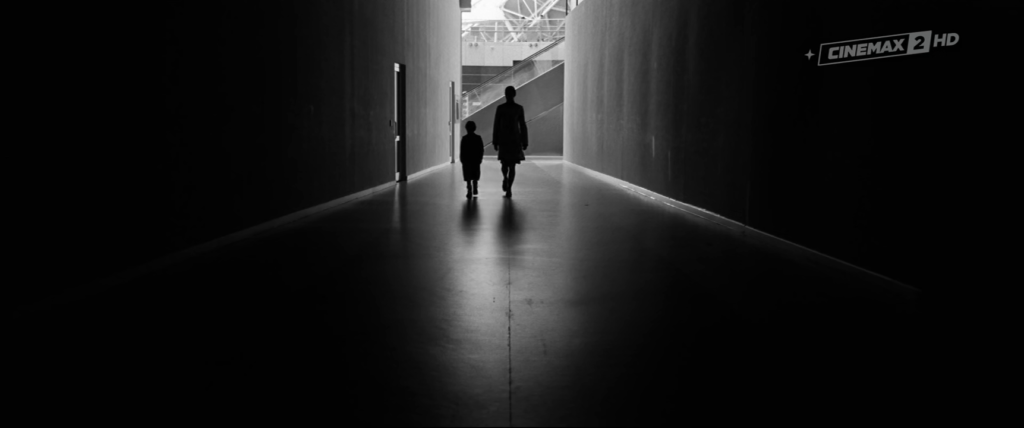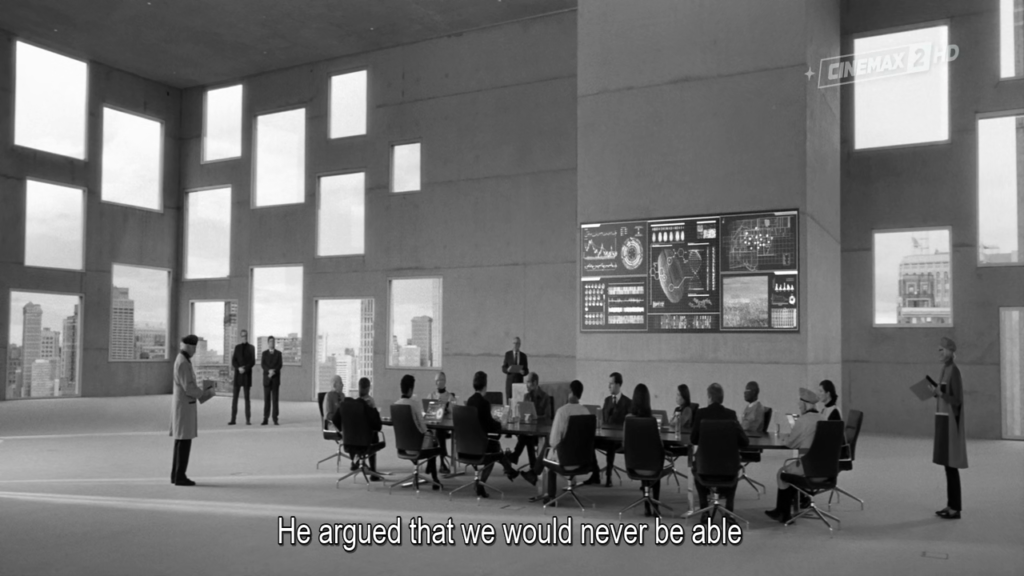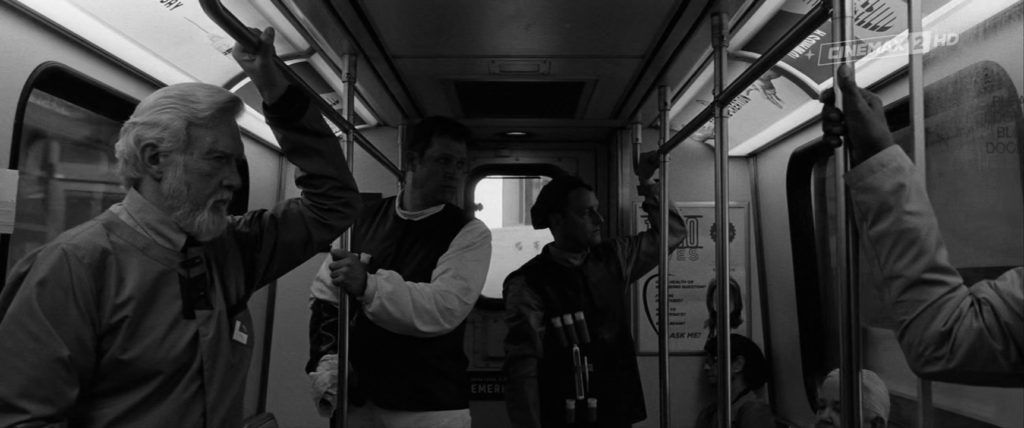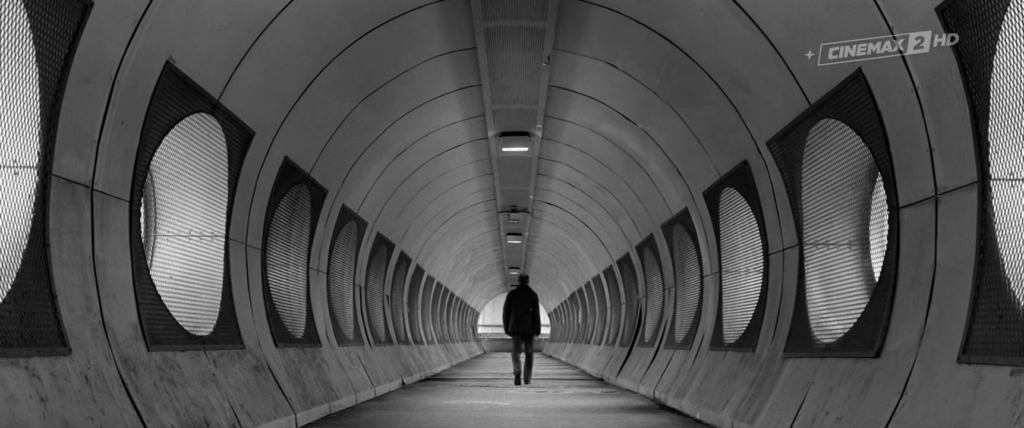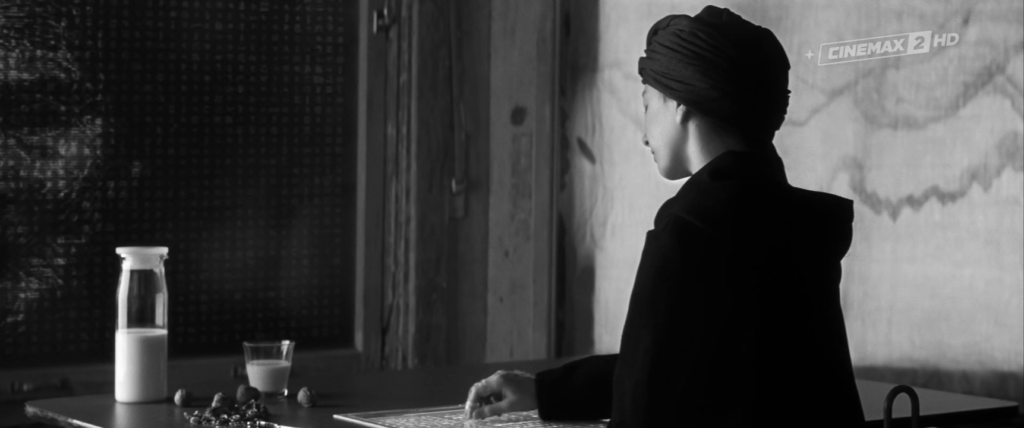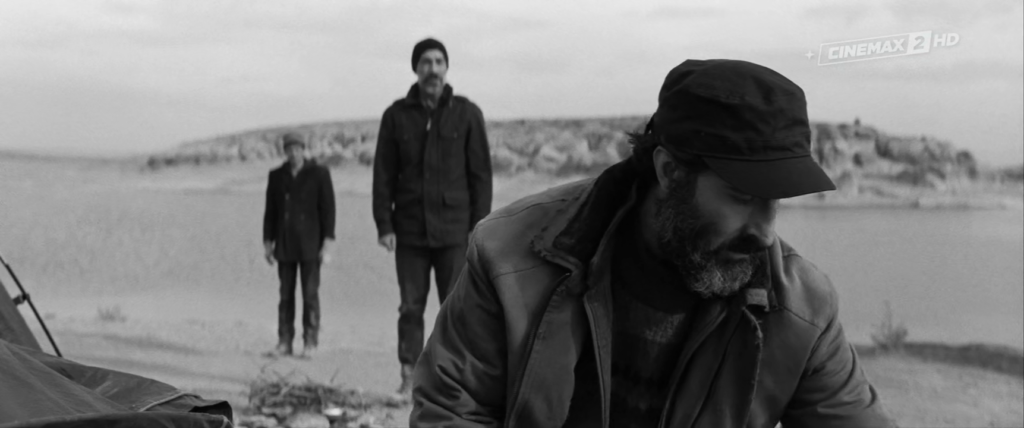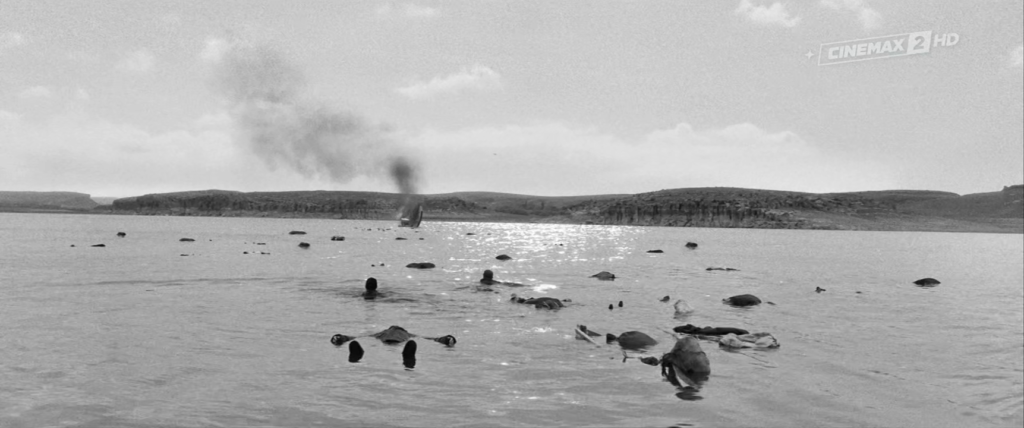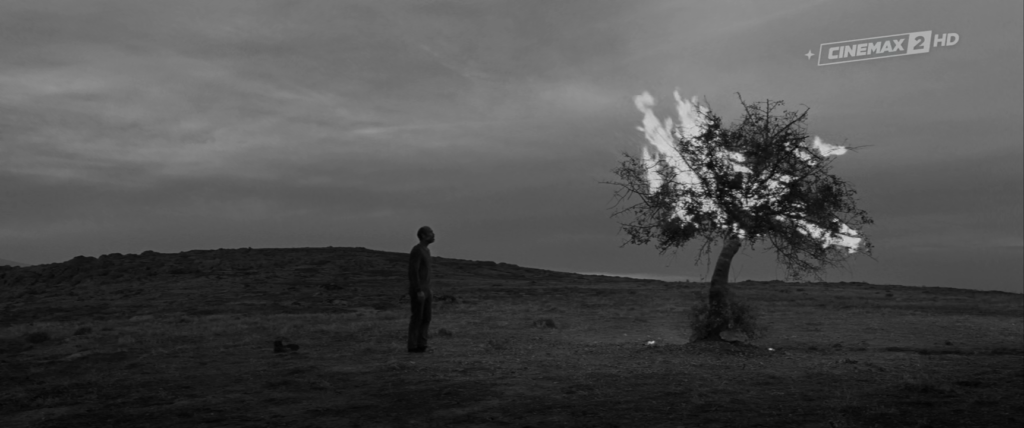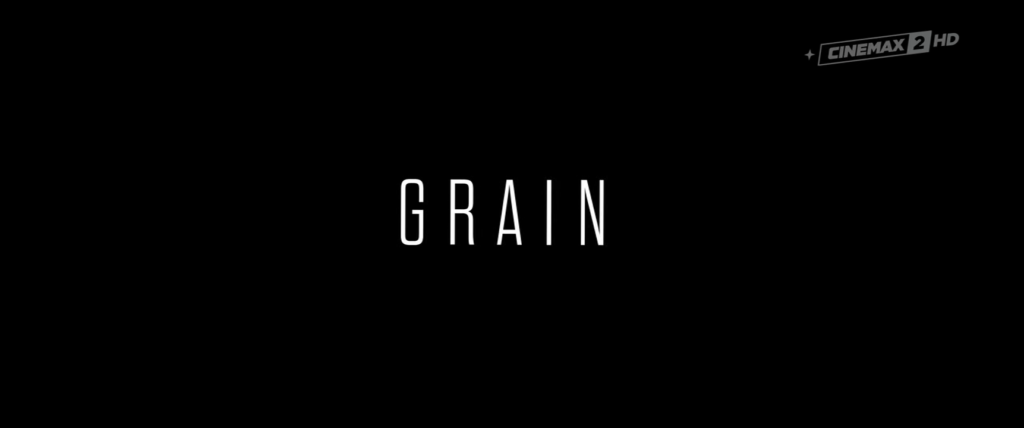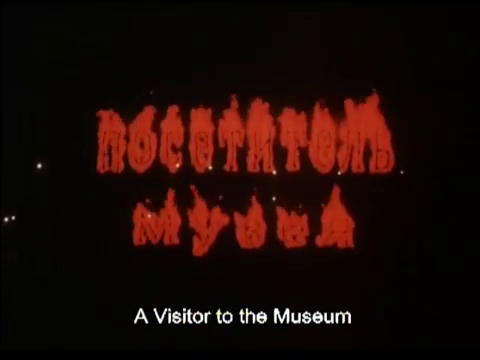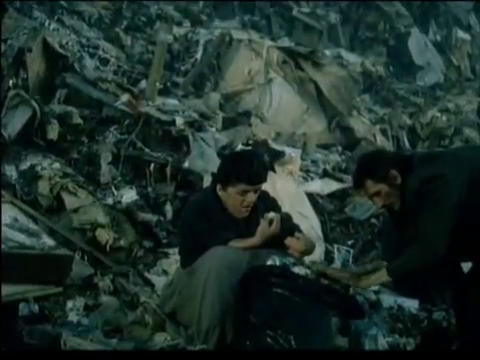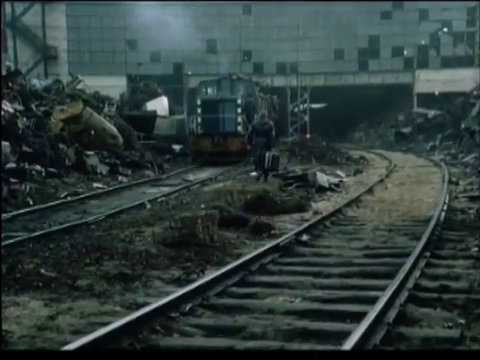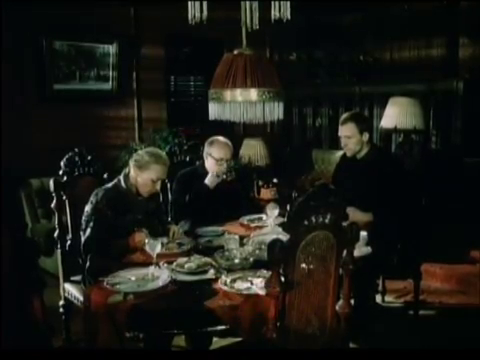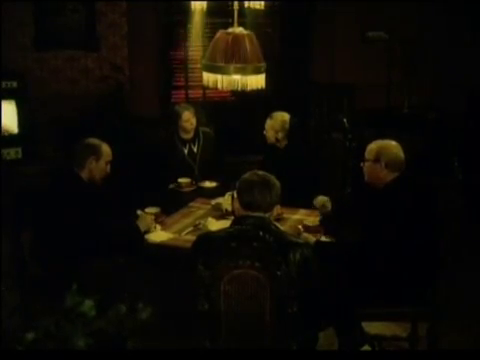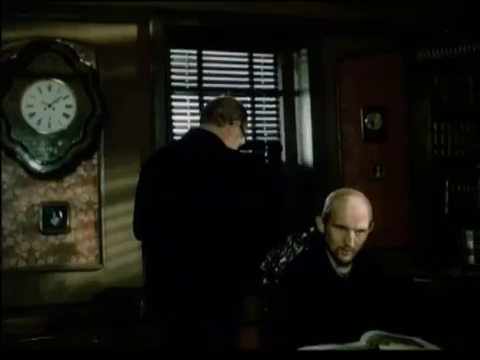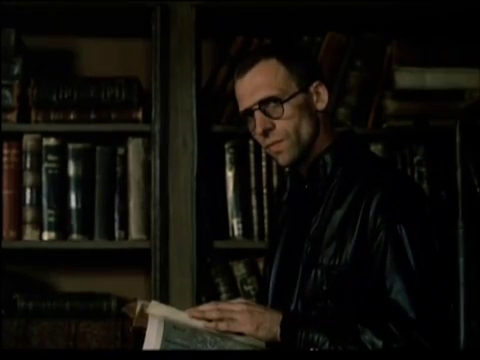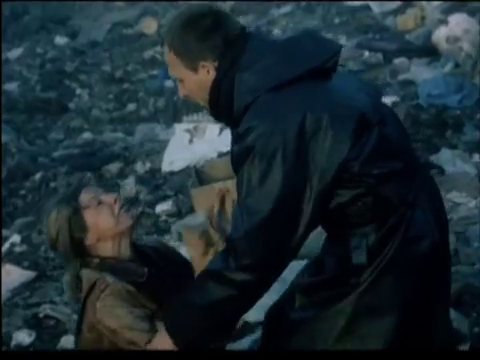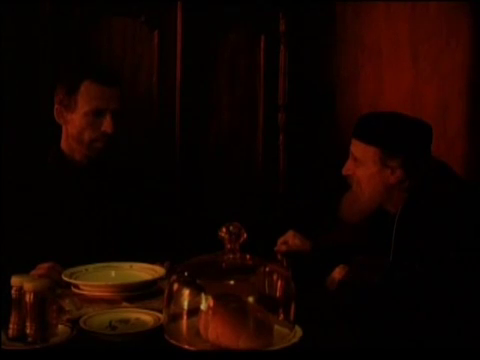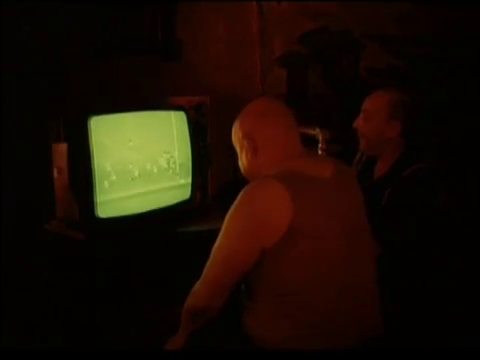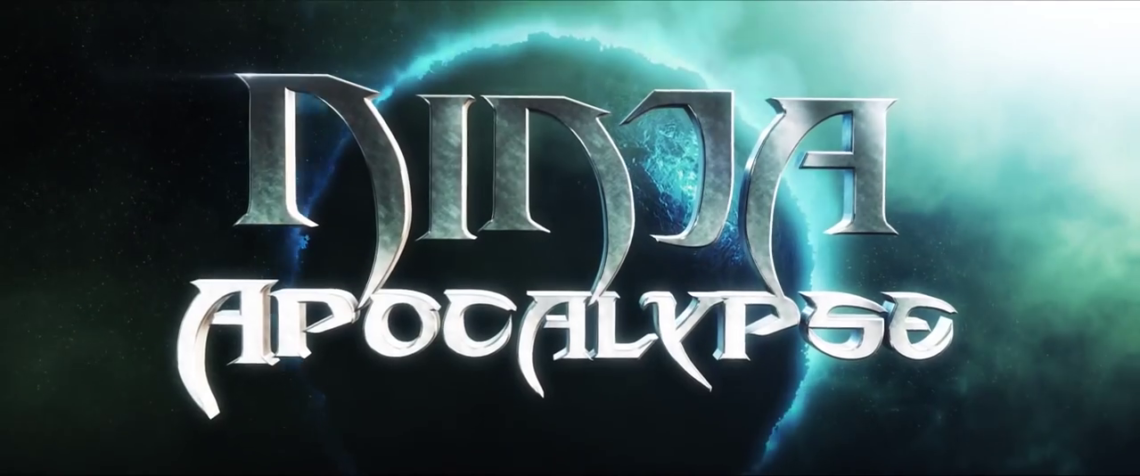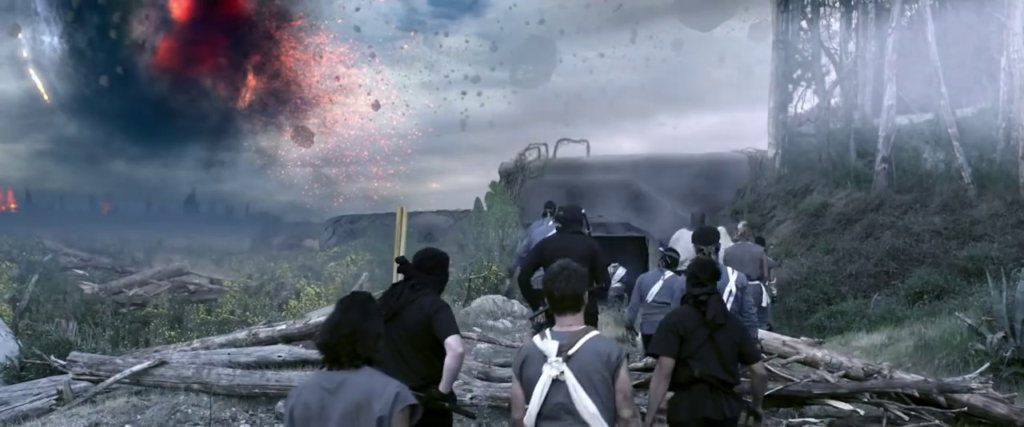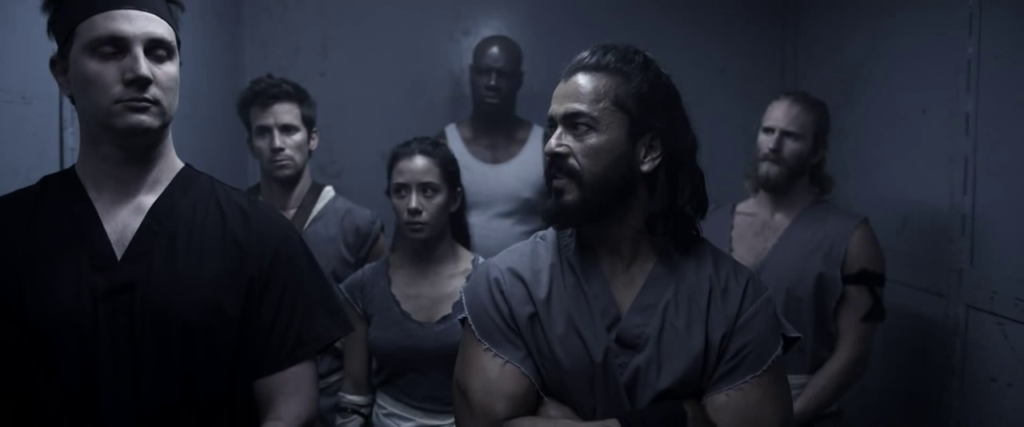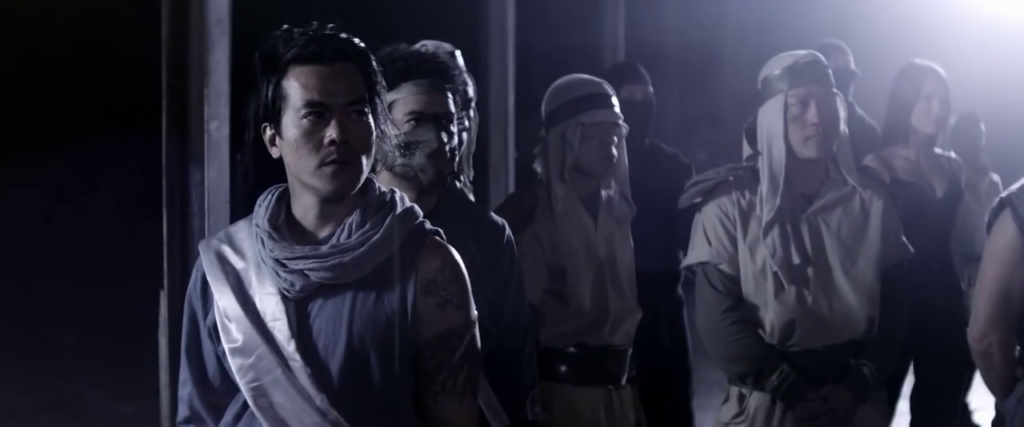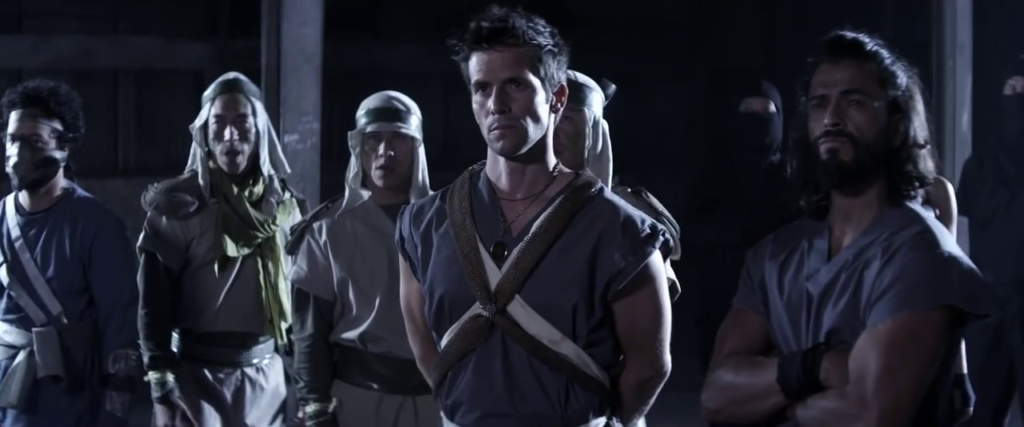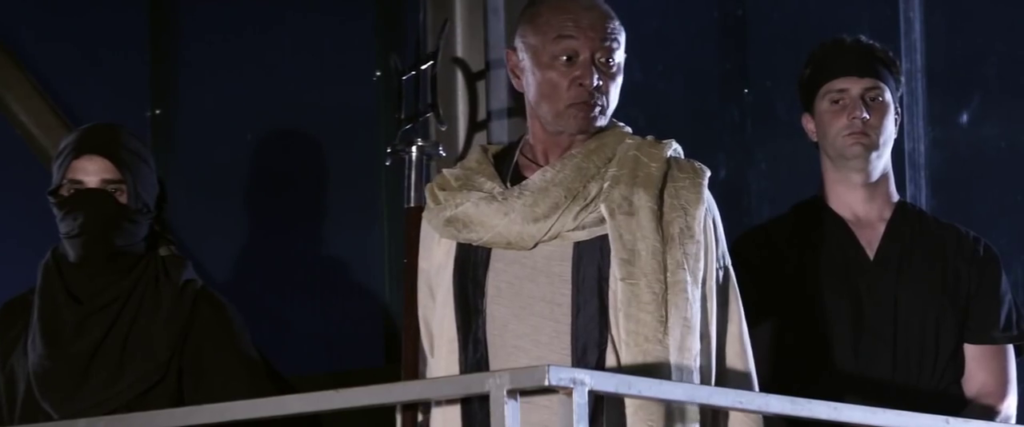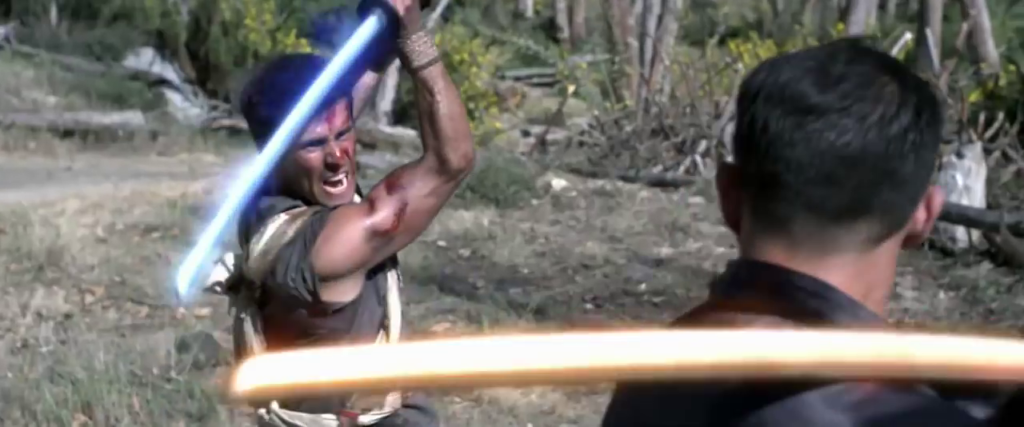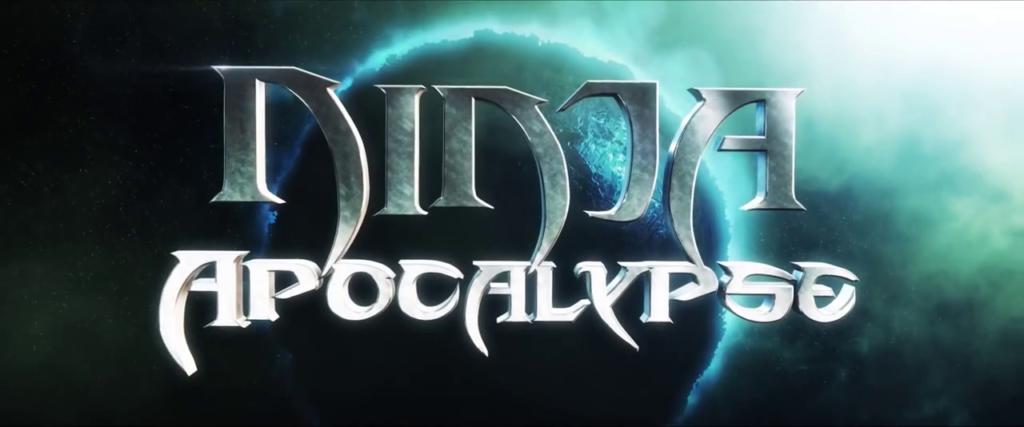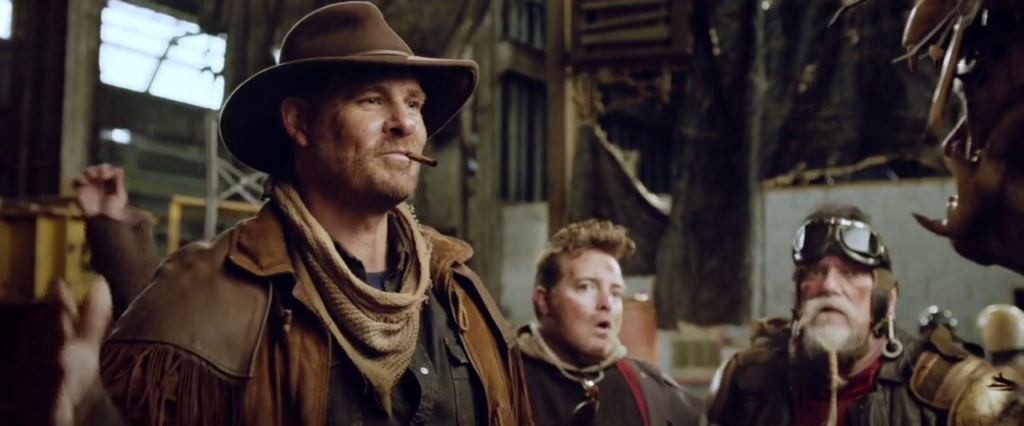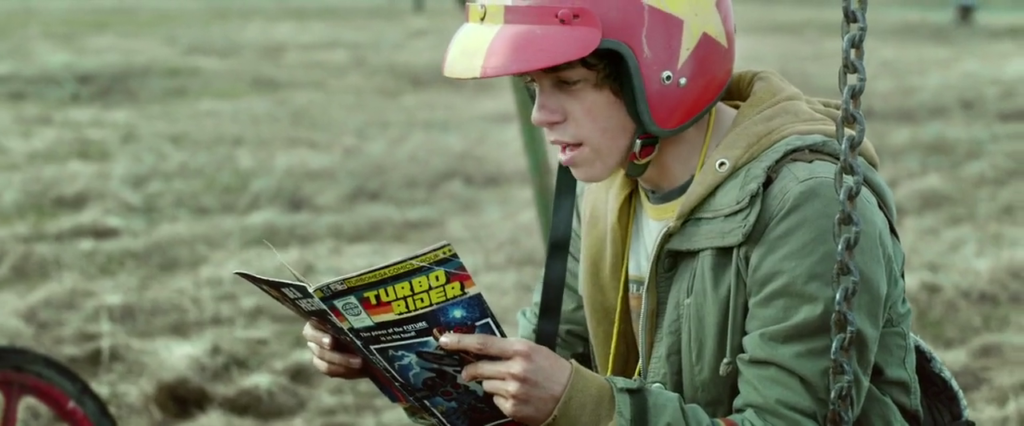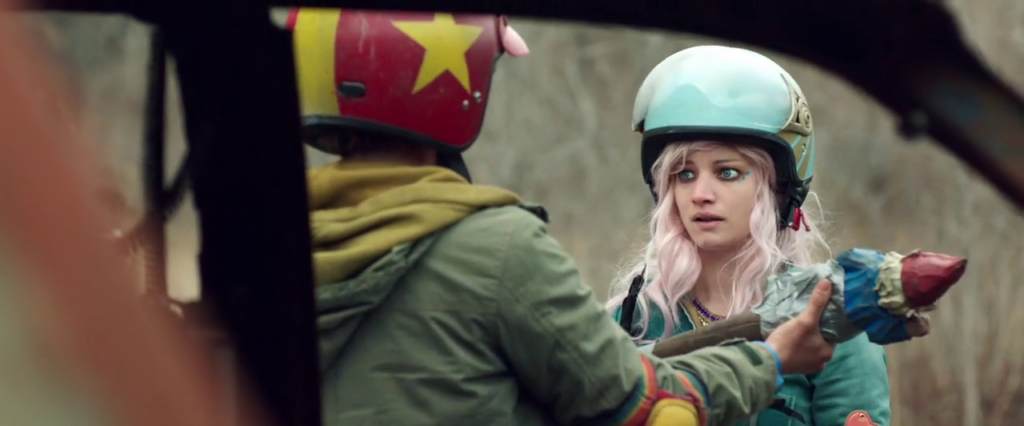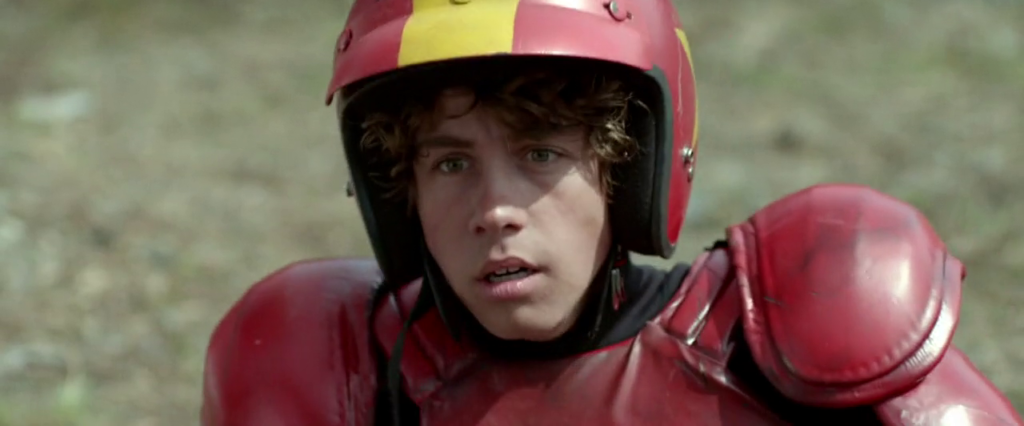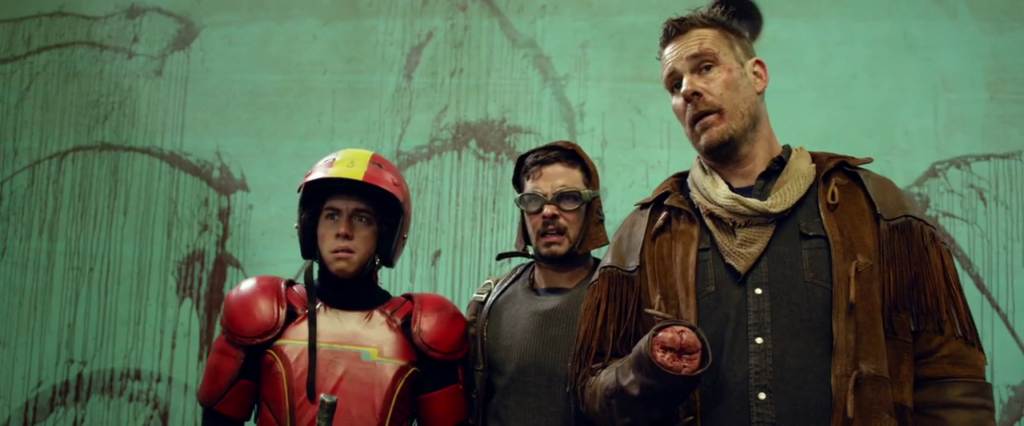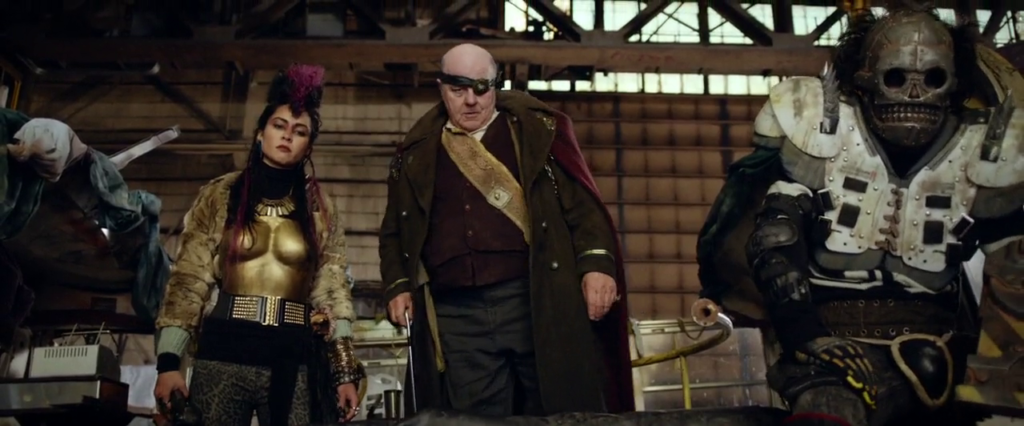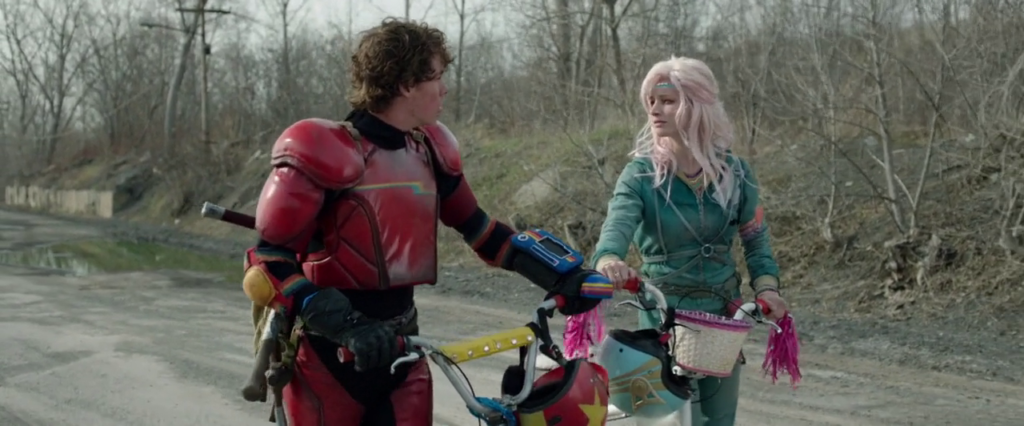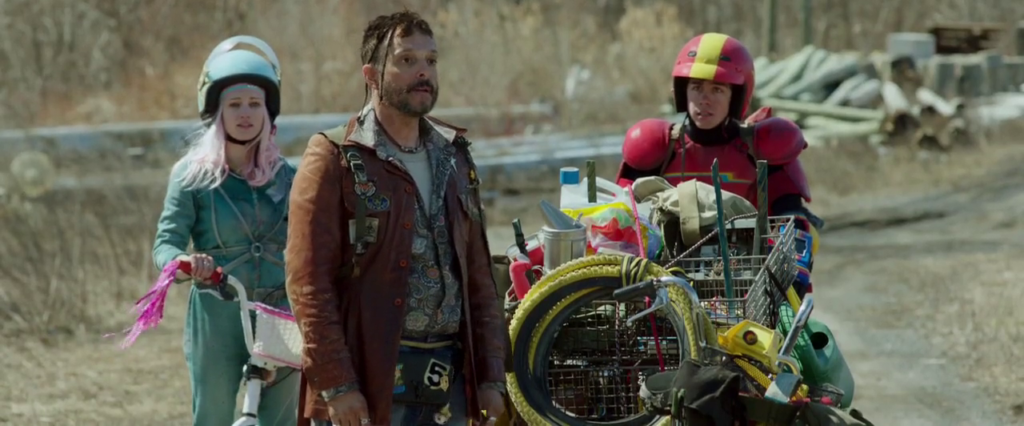-
#570 – Tank Girl (1995)
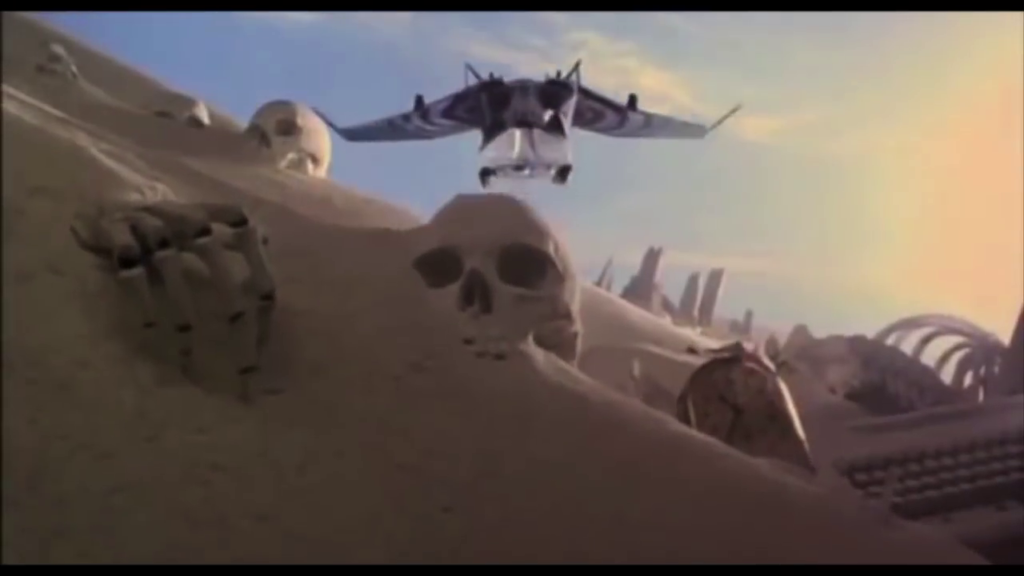
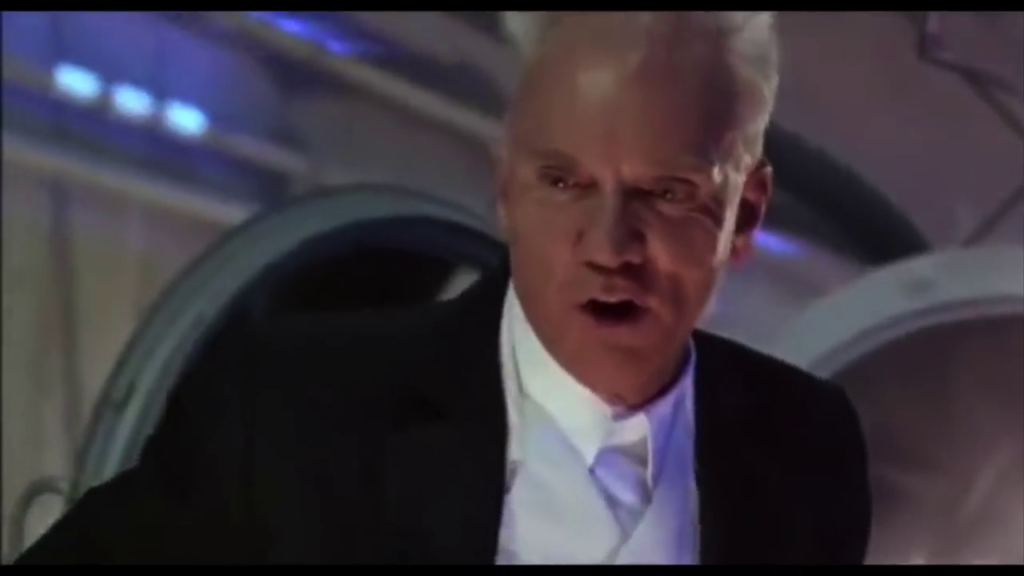
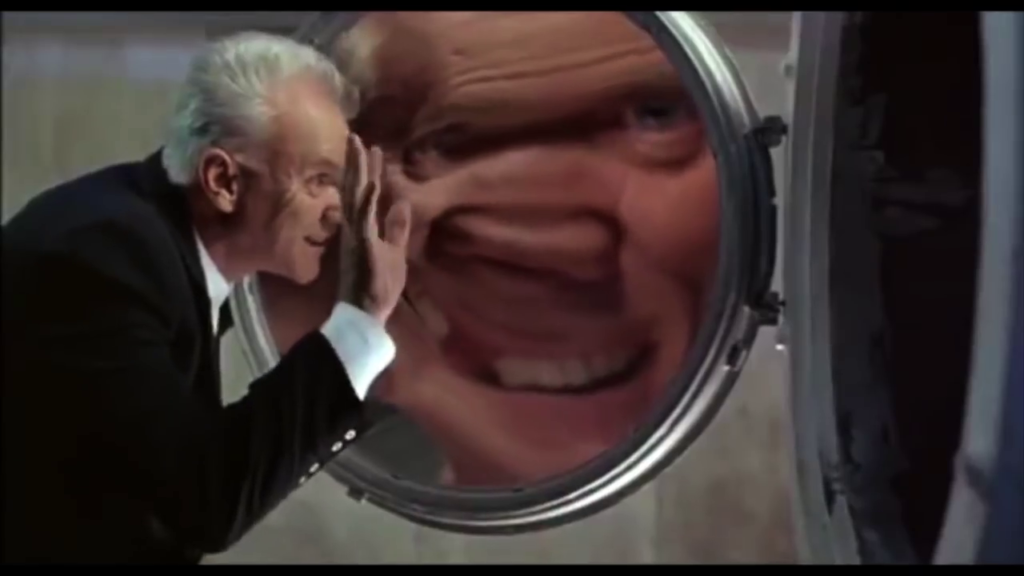
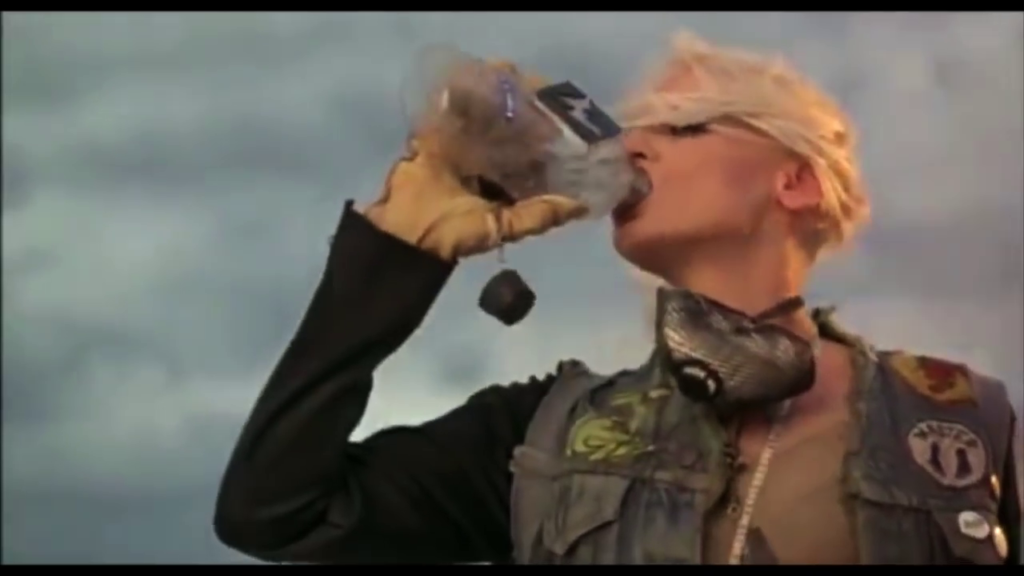
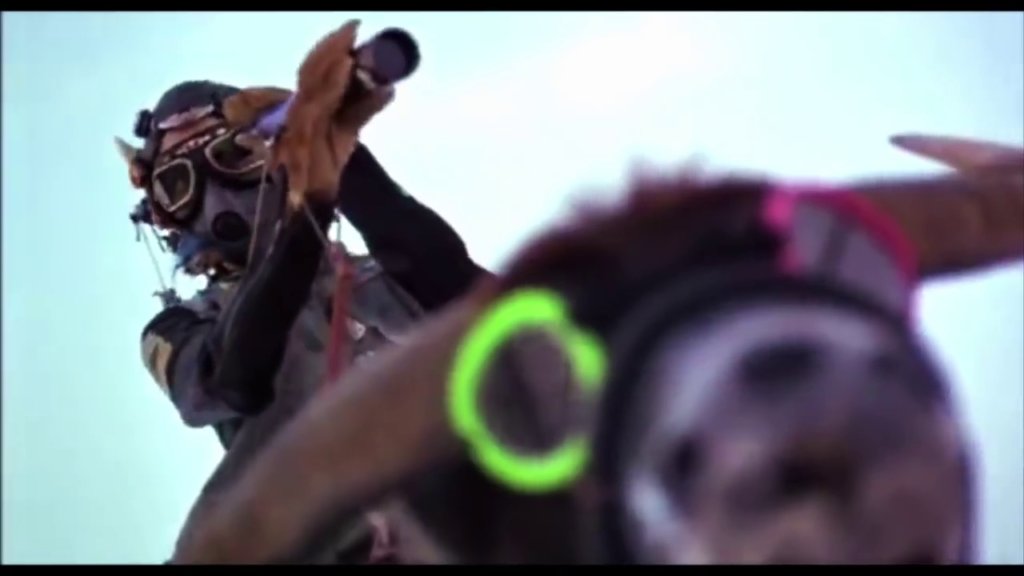
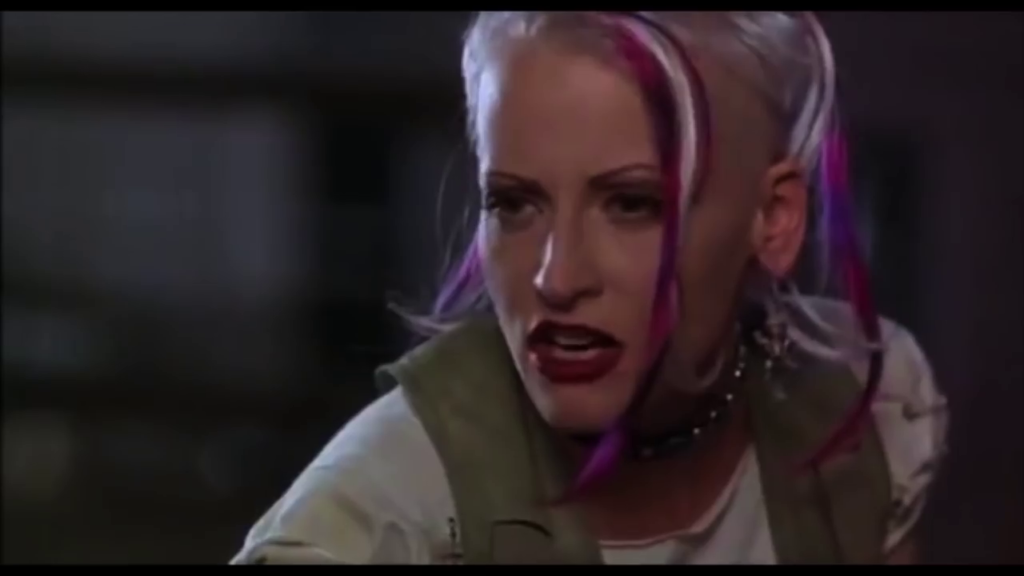
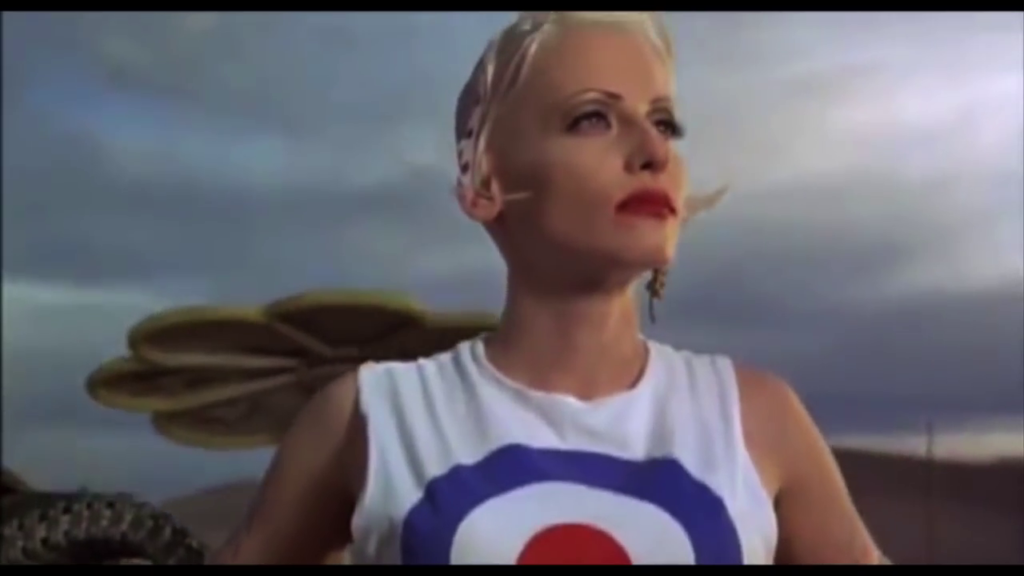
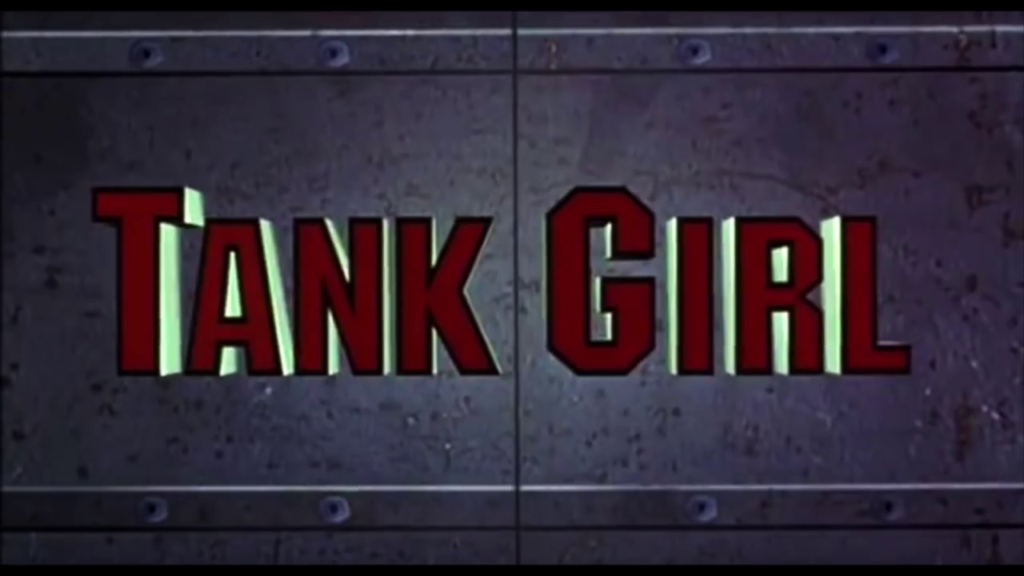
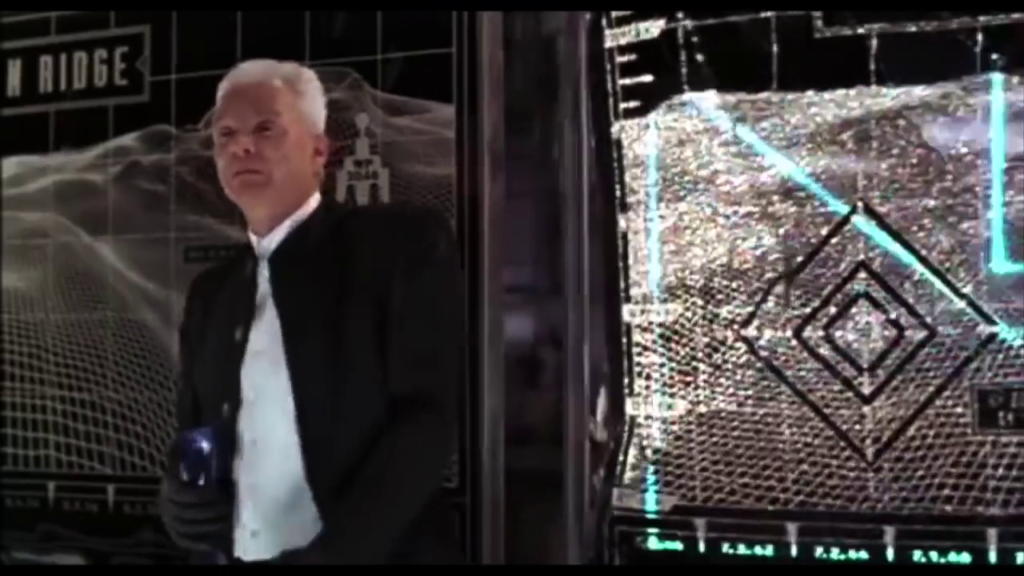
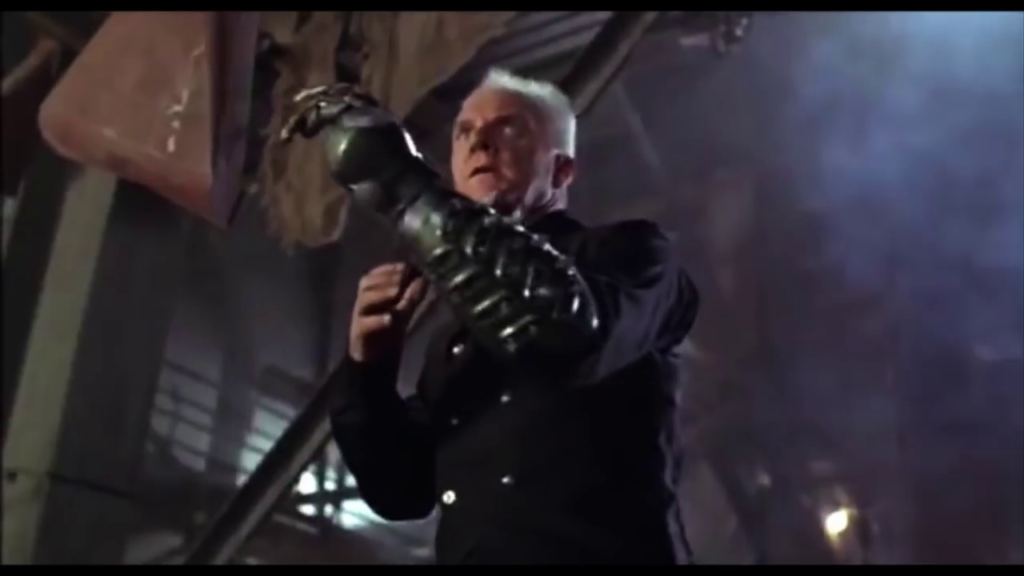
Tank Girl (1995)
Film review #570
Director: Rachel Talalay
SYNOPSIS: After a comet strikes the Earth, society is wiped out and water becomes a scarce resource. The Water and Power company is intent on controlling all of the world’s water, and when they find a group of wastelanders illegally siphoning water, they move in to put a stop to it. Tank girl, one of the survivors of the attack, is captured, but escapers and plots her revenge…
THOUGHTS/ANALYSIS: Tank Girl is a 1995 post-apocalypse film based on the comic book series of the same name. Set in the year 2033, some years after a comet wiped out all society on Earth, water has become a scarce and precious commodity. The Water and Power company is aiming to have control over all of the water, and taking out anyone who gets in their way. A group of people living in the wasteland are siphoning water from the company’s supply, and when they are found out, raid the compound, taking Rebecca, one of the residents prisoner, and killing the rest. Impressed with her talents, the Water and Power Company boss Kesslee wants to hire her for a mission, but Tank Girl refuses, and so she is locked up until she changes her mind. Managing to escape with the help of an introverted mechanic known only as Jet Girl, Tank Girl looks for a way to take revenge against the company. The setting of the film is a familiar post-apocalypse one, with ruins and deserts as far as the eye can see. The story itself is also pretty simple: rescue the girl and stop the bad guy. The film thrives on its simple beats and being chaotic, but the trouble with the film format is that it requires a direction and a structure, which ultimately, Tank Girl just doesn’t do, nor does it seem to want to.
Every character has essentially one dimension to them, and their roles are firmly set in stone throughout the film. There’s points in the film where there is some attempt to give Tank Girl some motivation and background, but it only really serves to make you question the bizarre and over-the-top antics, when you could just revel in them. There isn’t too much of this, but it does slow down the film at points. As mentioned, the characters are very one-dimensional, and this has some good and bad points: Tank Girl’s constant quips in every situation keep the film from getting dragged down and too serious, but this also has the effect of making her character very predictable: every situation she faces, you know that she’ll just brush it off with a dismissive quip, and in some ways makes her chaotic character a bit more predictable. Jet Girl provides a nice counterbalance to Tank Girl personality-wise, but their relationship again doesn’t go any deeper than that. Malcolm McDowell is Malcolm McDowell as the villain: no frills, no nonsense, just a classic villain, and there’s nothing wrong with that.
The film really revels in both its comic book origins and punk aesthetic. Moments of the film are done in the style of comic panels that are colourful and chaotic, but there’s a strange randomness to them in the sense you never know when they’re going to come in, and there’s large chunks of the film where they just don’t appear to make them a consistent storytelling device. You get the feeling that they’re using these comic panels to avoid actually filming scenes and cutting corners, and the director confirmed that there were whole scenes unfilmed and replaced with these comics instead: resulting in these panels taking you out of the action, and returning you in a completely different scenes without threading them together. The whole punk aesthetic is quite cool, and gives the film an edge: the soundtrack is packed with punk tracks, and the chaotic costumes lean into that scene. I think the main issue with the film is the overwhelming smell of studio interference. It feels like Tank Girl constantly wants to revel in much more sex and violence (as it does in the source material), but it always just falls short: kills are always a little bit obscured or done offscreen, and any reference to sex or nudity never goes as far as it should, and it feels like there’s an artificial limit on it, almost as if toy keep the film in a certain age rating. Again, the director often mentions that there was a lot of studio interference in this film, which probably resulted in it being restrained in the final cut. Overall, Tank Girl has a lot of anarchic energy and leans heavily on the comic book and punk aesthetics to make itself stand out. It’s certainly not for everyone: I imagine the very one dimensional characters and predictable quips may not be to everyone’s taste, but there’s enough energy and decent performances to at least keep it interesting. Regardless, there’s definitely an issue with the film constantly feeling like it was toned down, and is not allowed to be as gory or explicit as it wants to be in line with the source material. There are still plenty of people that like this film though, and I think it’s one that is going to be strictly down to personal preference, and whether the punk and chaotic aesthetic appeals to you or not.
-
#567 – Snowpiercer (2013)
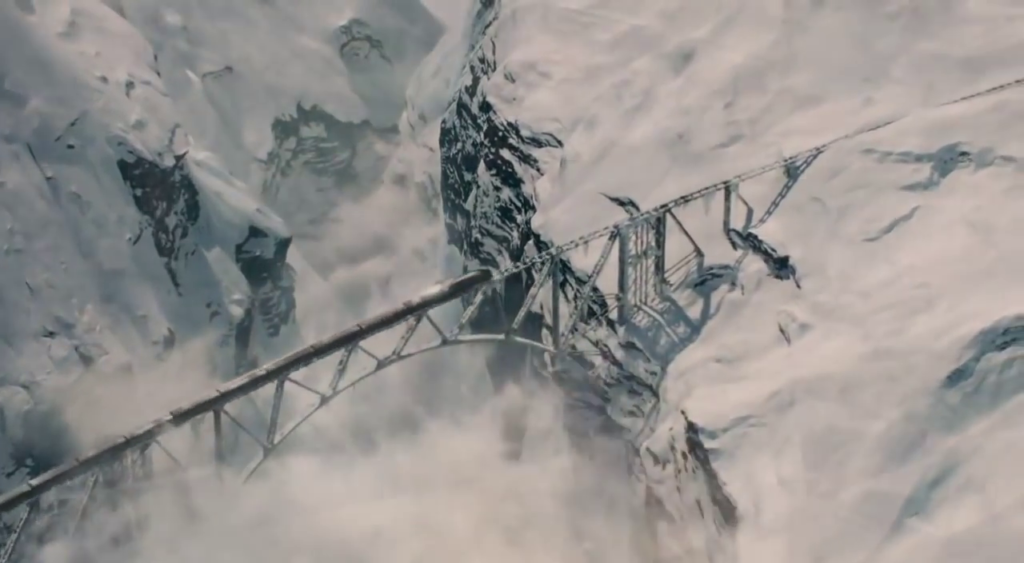
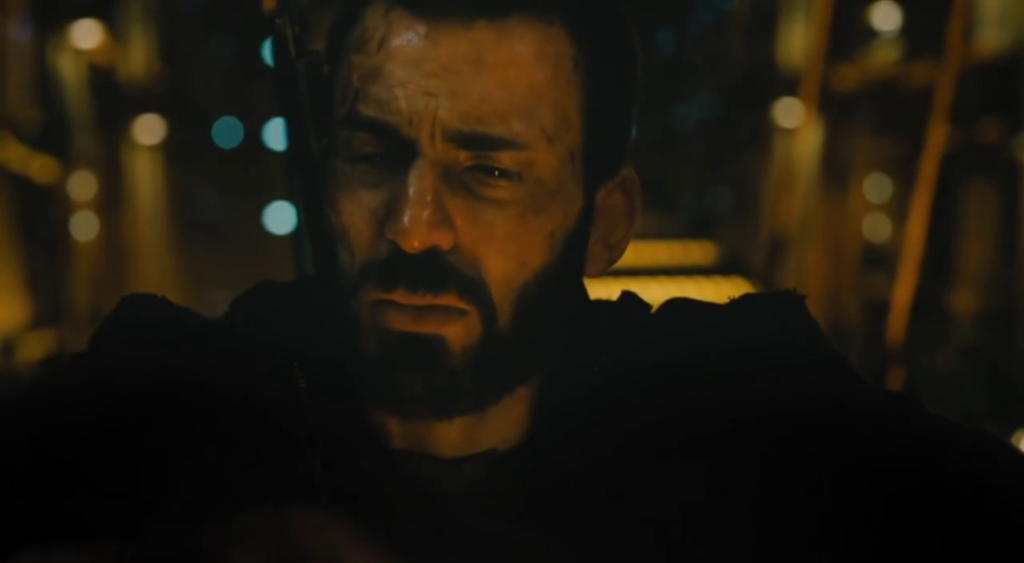
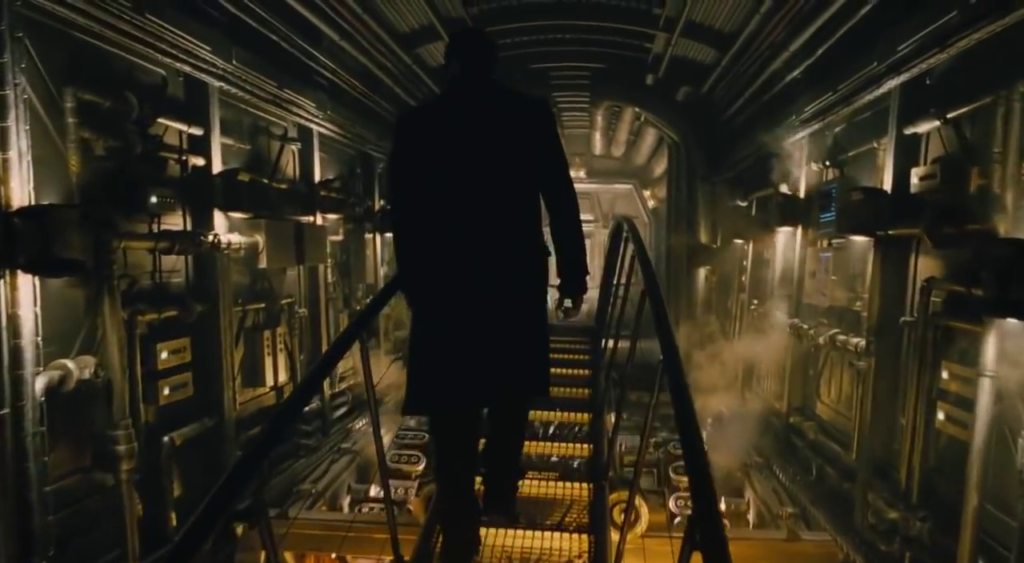
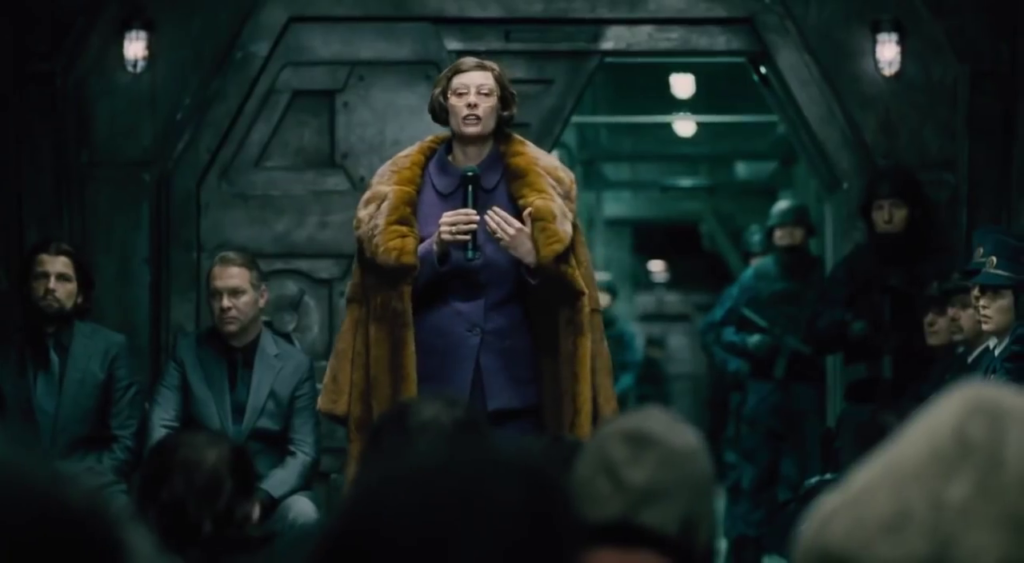
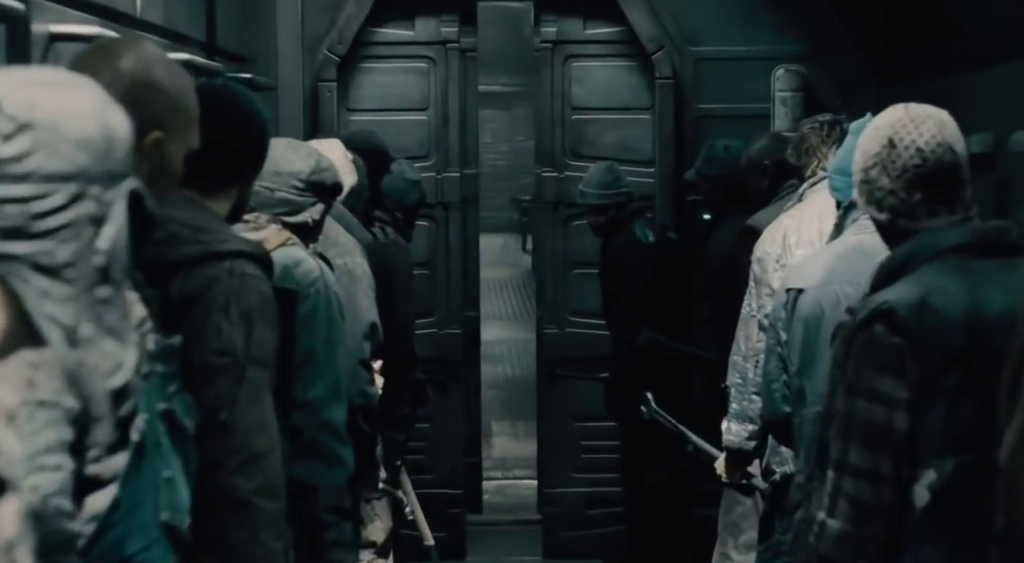
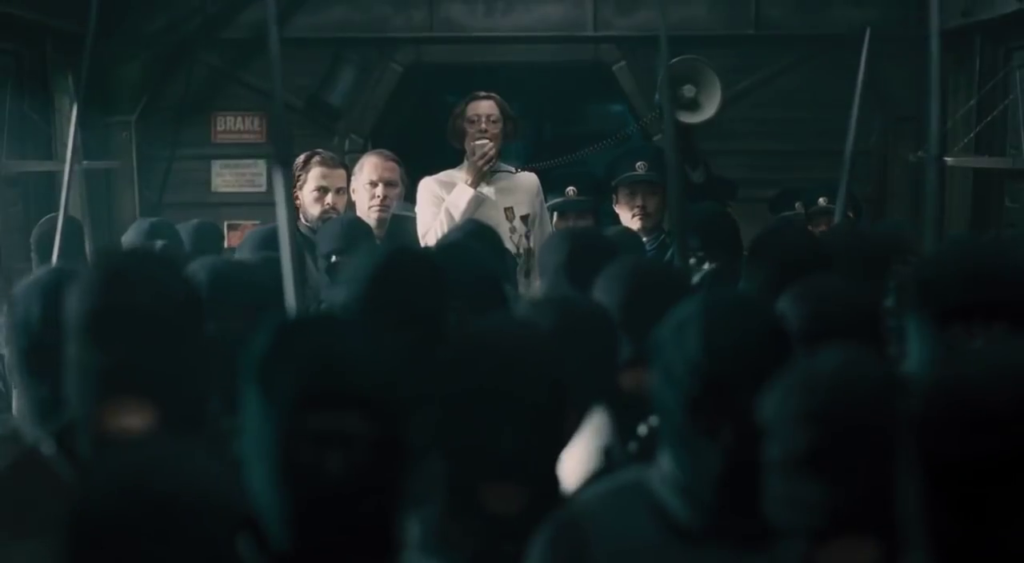
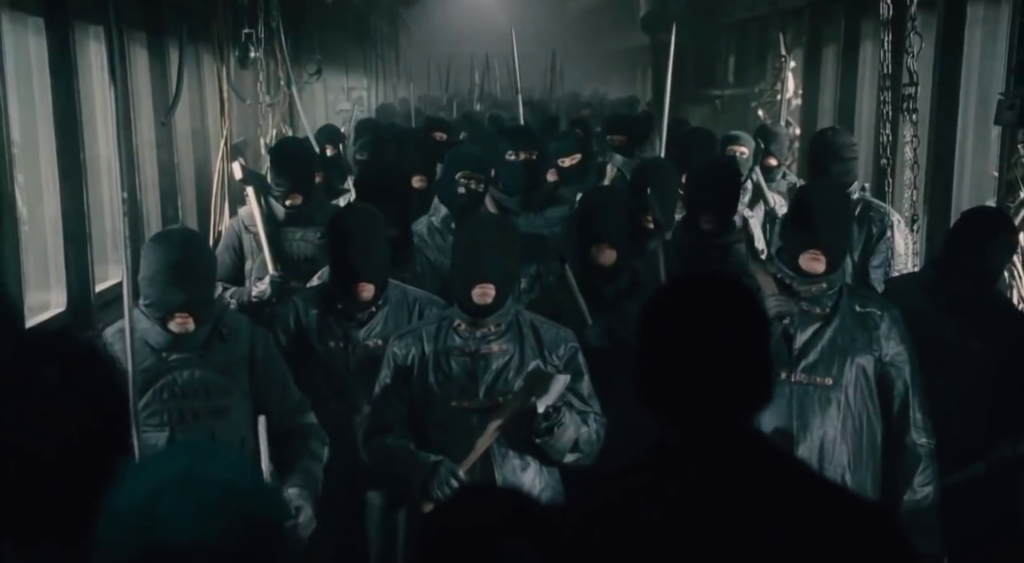
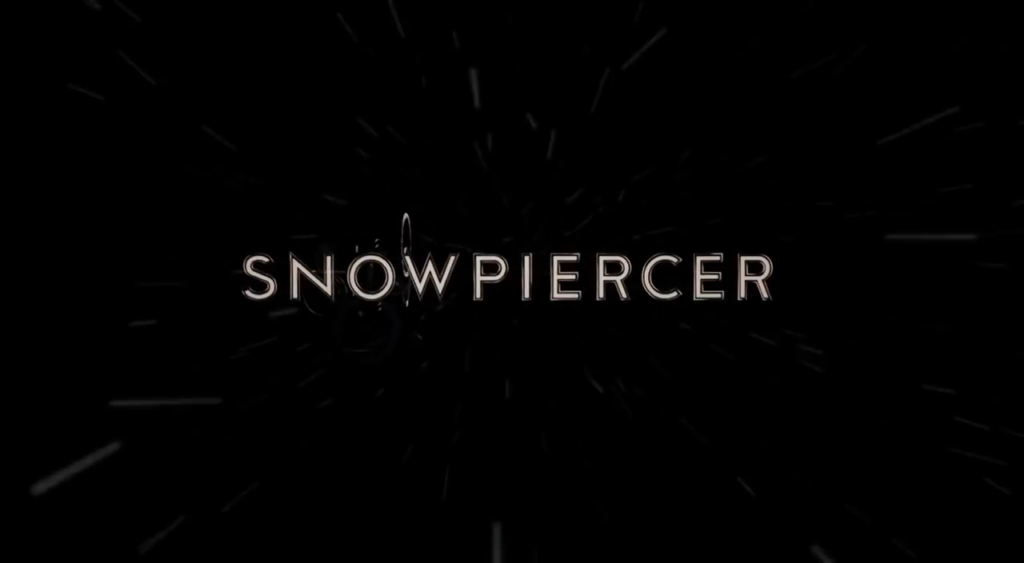
Snowpiercer (2013)
Film review #567
Director: Bong Joon-Ho
SYNOPSIS: After an attempt to halt climate change by releasing a chemical into the atmosphere, the Earth has turned into a frozen wasteland. The only survivors live aboard a trans-continent train that takes one year to travel the globe. At the front of the train, the people live in luxury, while those at the rear live in squalor. Among them is Curtis, who is scheming to revolt and make his way to the front of the train, and lead the people there to a better life…
THOUGHTS/ANALYSIS: Snowpiercer is a 2013 sci-fi post-apocalypse film based on the French graphic novel of the same name. The opening introduces us to the premise of the film; in which a solution to climate change was to disperse a chemical into the atmosphere, but this had an effect of completely freezing the earth and rendering it uninhabitable. The only survivors are living aboard a train that is constantly moving around the world, completing one full trip every year. The train is separated into a very specific order, with the wealthy and privileged living a life of luxury in the front cars, and the lower class living in squalid conditions in the rear carriages. One such person, Curtis, is working on a plan to stage an uprising to get to the front of the train and take control. The film follows the revolution as it travels through the train from the back to the front, and while you might be a little sceptical of how much variety and action you can fit in a 2-hour film set inside a train, you need not worry, as the film does a solid job of keeping things interesting, and varied. You get the claustrophobic feel of the carriages thanks to the impressive camerawork and crowded sets that generate a unique environment. Different carriages look like slums, factories, classrooms, restaurants, and nightclubs, all bound up in the same physical dimensions of a train carriage, and it’s very solidly executed. The story is a fairly simple one to follow, and again, despite it’s linearity, the film is able to drop in plenty of surprises and unique obstacles as the cast travel through the train. Perhaps they could have done something a bit more impactful with the ending, but that’s the only criticism I can think of.
The cast of characters are well defined, and often exaggerated personifications of different facets of society. Curtis is the reluctant leader of the revolution, and you get a decent insight into the decisions he makes and how they weigh upon him. There’s also a constant element of danger, as the stakes are constantly raised as a reminder that no one is safe; as main characters get killed left and right, and the revolution is always in a precarious position. The cast feels genuine, and on the whole the film is well acted, with a good, varied cast.
As mentioned, the film really shines in it’s design and atmosphere: the train is able to encapsulate all these familiar environments, but with the twist of being contained in a carriage. It doesn’t rely on cheap special effects, but rather well-co-ordinated action sequences that, thanks to the cramped settings, put you right in the action. The premise of a global-spanning train might sound a bit silly, and a post-apocalyptic setting that is used because only the best ones have already been done to death, but Snowpiercer genuinely offers something refreshing and exciting, combining a harsh and gritty setting with some stylish and exuberant characters. While the ending leaves things open-ended, it’s a satisfying journey that combines a layer of seriousness and high stakes with some more absurd and exaggerated characters that lift the film out of being a total gloomfest just enough. Yes, the train is a thinly-veiled metaphor for the class-system, and there’s not a lot of surprises in that regard, but the film genuinely surprises in being an entertaining, action-packed story despite the kneejerk impressions you might have of a revolution taking place on a train. I genuinely enjoyed it more than I thought I would, and again, while not perfect, excels in enough ways to take it an entertaining and interesting watch.
-
#527 – A Nymphoid Barbarian in Dinosaur Hell (1990)

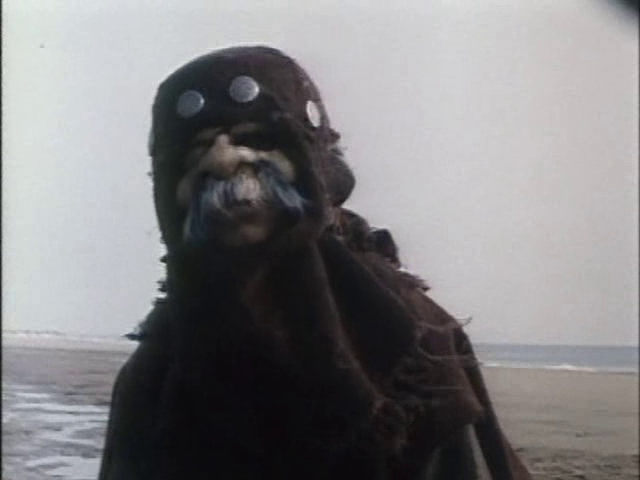
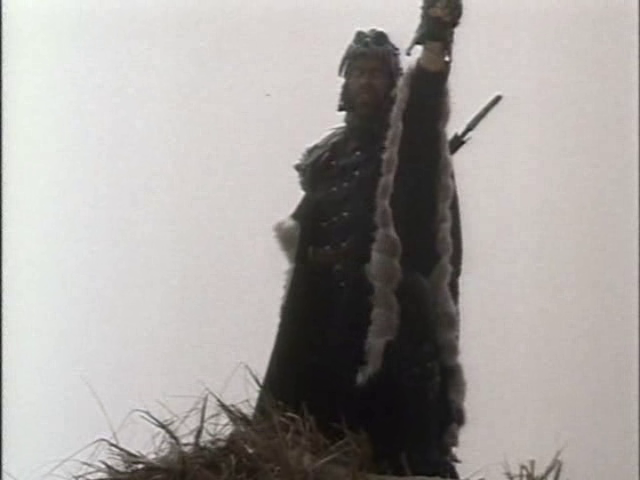
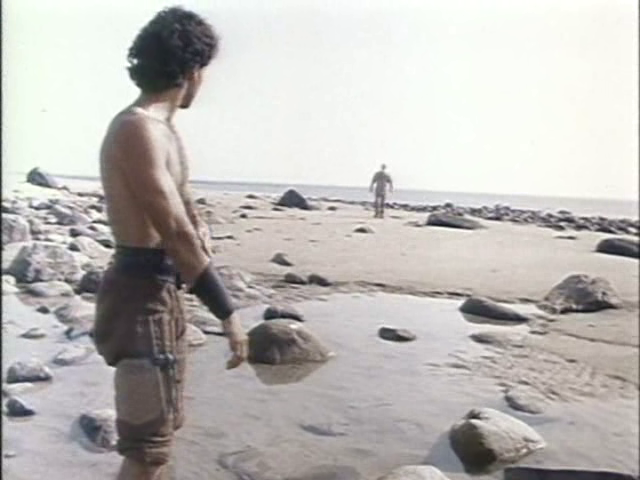
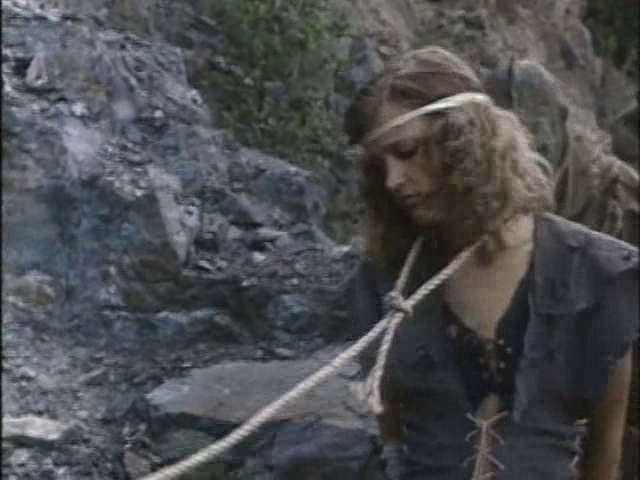
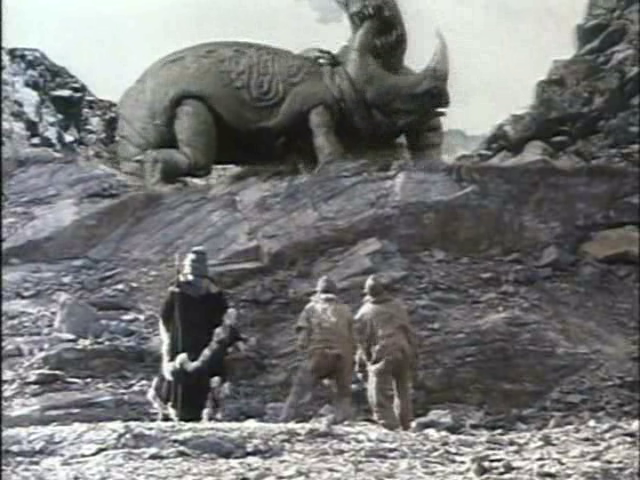
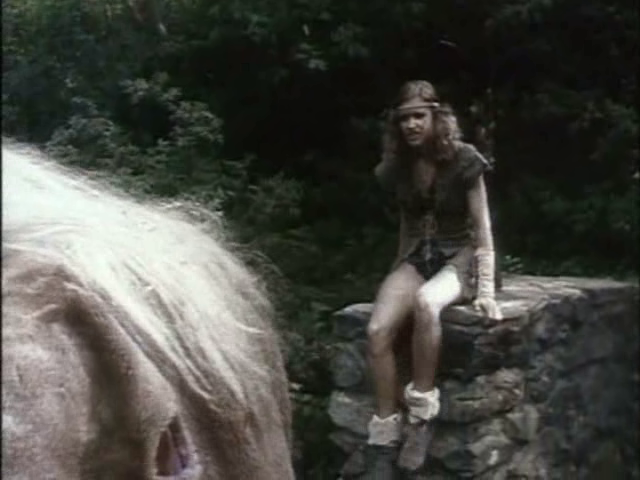
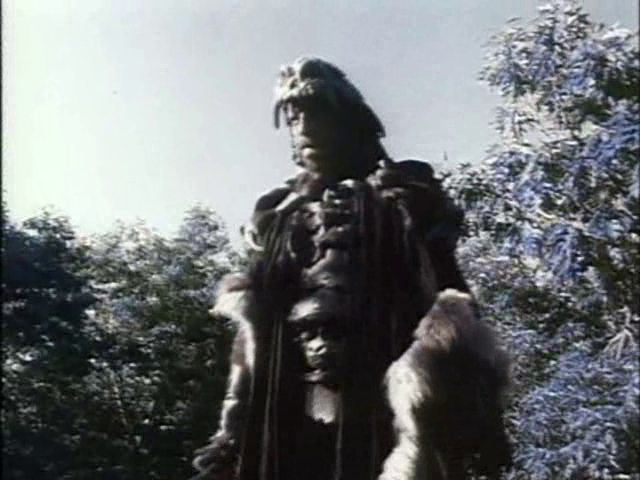
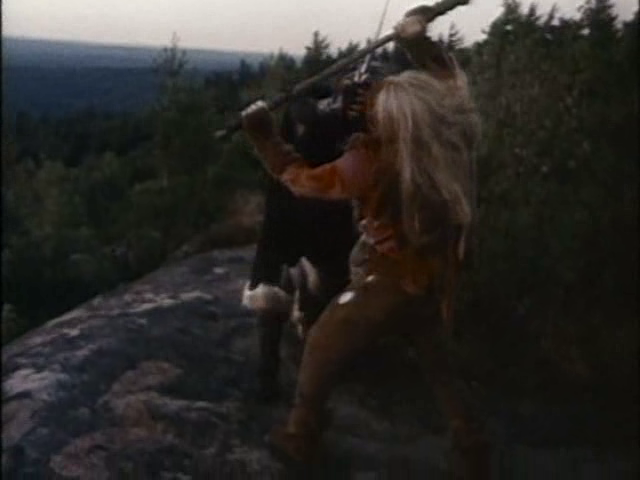
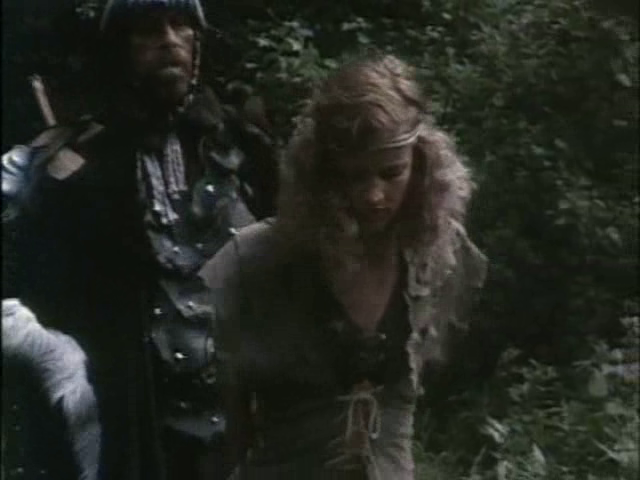
A Nymphoid Barbarian in Dinosaur Hell (1990)
Film review #527
Director: Brett Piper
SYNOPSIS: In a post-apocalyptic Earth, a young woman has to survive in a world infested with dinosaurs, mutants, and barbarians.
THOUGHTS/ANALYSIS: A Nymphoid Barbarian in Dinosaur Hell is a 1990 post-apocalyptic sci-fi film. The film opens up the same way as nearly every post-apocalyptic film does: with a montage of the world being essentially destroyed by nuclear war. What is left is a world filled with dinosaurs, mutants, lizard people…just a mish-mash of any and all typical things you’d find in other films. There’s not much rhyme or reason to the setting. The plot is…basically non-existent: there’s hardly any dialogue, any motivation, or any direction. With post-apocalyptic films you can definitely make the lack of dialogue or story work: in a world where society has collapsed, sometimes the only goal is to survive, and films like Mad Max 2, which also uses minimal dialogue and focuses on action, works extremely well. Here, that is not the case, as the action is sub-par and without any spectacle. The film just consists of some wandering about and scrappy fights, with a few stop-motion monsters as well. There’s no sense of character, world or development to maintain interest, and it certainly doesn’t live up to the hyped up title, which is probably the only reason anyone would be drawn to this film.
But we shouldn’t perhaps be so disparaging about the film because it was made by the company Troma; who are known for making low-budget sci-fi horror films that rely on comedy and satire to make fun of the genre. Even by Troma’s standards though, this is bad. This film just doesn’t have any amount of self-awareness or satire that would make you think it is poking fun at the genre: it’s just dull, and the lack of any substance means you really have no idea what to take from it. The title promises much, but delivers very little: there’s not really any dinosaurs, the barbarian isn’t a nymphoid (in fact nymphoid isn’t a word), and you’re not missing out on anything if you skip this film.
-
#514 – The Day of the Triffids (2009)
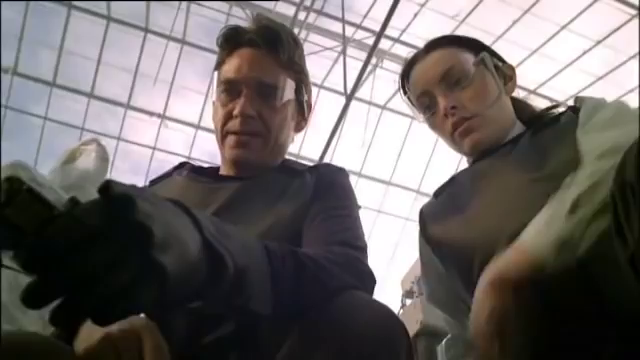
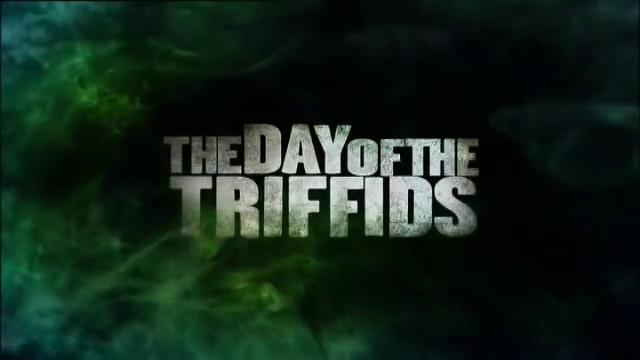
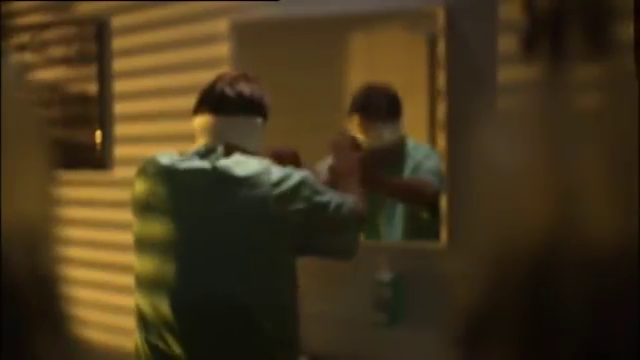
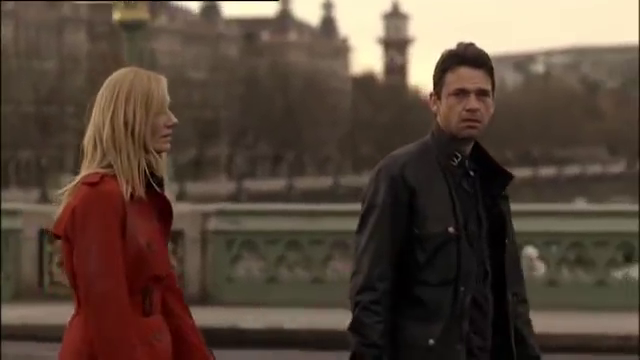
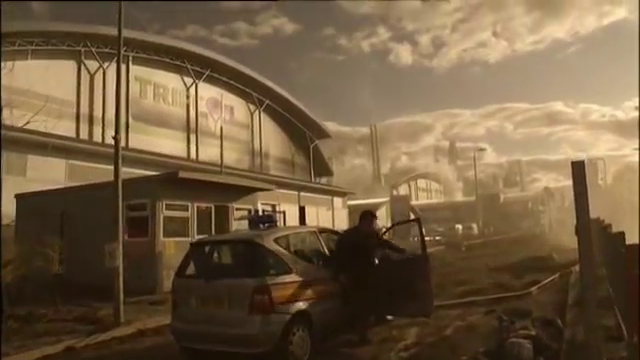

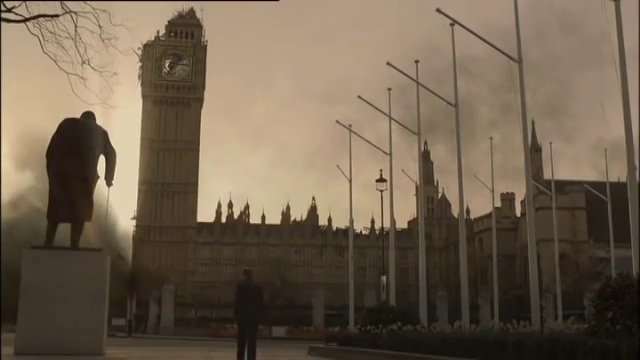
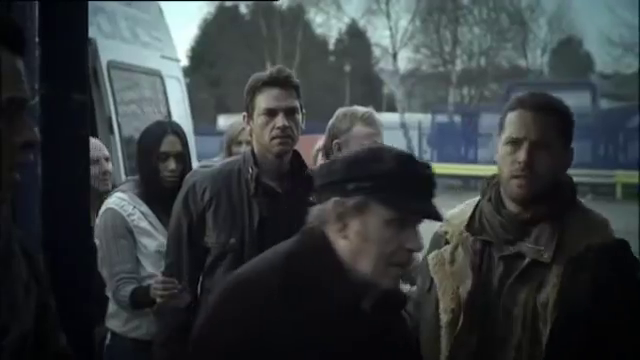
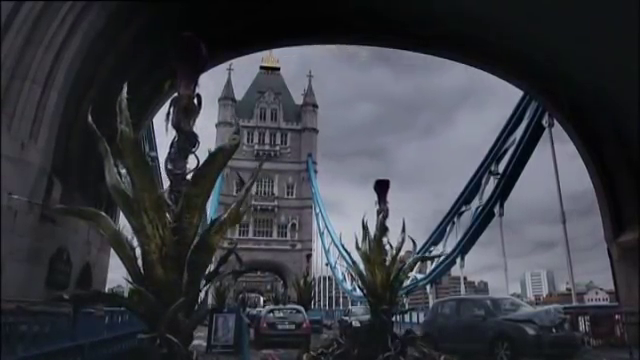
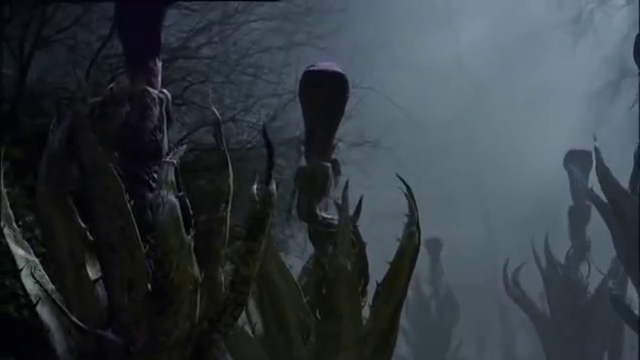
The Day of the Triffids (2009)
Film review #514
Director: Nick Copus
SYNOPSIS: A solar flare visible across the world has the effect of making everyone blind, leading to the collapse of society and government. This also has the consequence of releasing the Triffids, man-eating, mobile, plants into the world after their containment facilities fail. Bill Masen, a scientist who studies the triffids, avoids being blinded by the flare due to having an eye operation, and awakens to find he is one of only a few people still able to see. Bill navigates the remains of civilisation, teaming up with broadcaster Jo Playton to try and survive this new world, and also to stop the triffids from feeding on the sightless population…
THOUGHTS/ANALYSIS: The Day of the Triffids is a 2009 two-part TV series, based on the 1951 novel of the same name by John Wyndham. The plot of the film is updated from it’s origins in the 1950s, making the triffids, a race of man-eating plants that can move, the answer to global warming through the oil they produce as an energy source (the original novel was similar, but didn’t have the global warming angle). Bill Masen, a scientist working with the triffids, is attacked by them and has to have an eye operation to save his sight. Meanwhile, a solar flare that is visible worldwide causes the vast majority of people to lose their sight. Bill, having his eyes bandaged, is one of the fortunate ones, and unwraps his bandages to find society collapsed and everyone around him stumbling around blind. The plot of the series is more closer in many respects to the original novel than the 1962 film, and the changes it makes to bring it up to date fit in well. One of the main issues I have with the story is the unrelated events of the solar flare (meteor shower in the original) and the release of the triffids. Given that both cause blindness, it makes it seem like there is some connection between the two, whereas apparently it is just coincidence. The 1962 suggested a link between the two (that the triffids came to Earth by a meteor), but no such connection here. I’m not sure how convincing it is either that so many people went blind, when apparently you could avoid it simply by having your eyes covered, or being underground (such as Jo in the London underground), surely that would leave a lot more people sighted? Nevertheless, most of the main plot points from the book are there, but slightly tweaked to make a more conventional flowing narrative. The original novel was very much a post-apocalyptic survival story, whereas this adaptation fits the characters and story into more conventional film roles, for example, separating characters into specific scenes and settings, and having an overarching villain. The series flows fine enough, but there’s a point in the middle where things feel a bit without purpose and lost, and has no idea what to do with the characters.
The characters themselves have likewise had a few changes to reflect the more modern setting, and the serial format. Bill Masen is a fairly unremarkable lead, but that’s okay, because the story is more interesting when it focuses on the world rather than the characters. Bill’s character is expanded by introducing a personal relationship with the triffids, due to his parents being researchers that studied triffids, and his Mother being killed by one. It is an element that comes into play more in the latter half of the film when Bill meets his Father, but it all feels very unoriginal. There’s also this strange recurring flashback from when Bill was a child and his eyesight was saved after a triffid attack by a shaman and a mask of some sort, but I didn’t really get the significance of it, and it really only pays off in the final minutes for an insignificant bit. Torrence, played by Eddie Izzard, takes up the villain role, and he is set up as a man who will do whatever it takes to survive (he mostly replaces Beadley from the original novel). His quirky, whimsy personality does feel a bit out of place in a post-apocalyptic setting, and I don’t think the series needs an overarching villain in a world where the world itself is the biggest enemy, along with the triffids, of course. One thing that is consistently evident is that nobody seems to know how to write women and children: Jo is the female lead, but her dialogue and everything she does just feels so ineffectual that it’s almost like she isn’t there for the most part. When the young girl Susan and her sister turn up later on too, their characters just don’t go anywhere or develop a bond with the others. There is a severe lack of coherence and relationship building between the characters which is overlooked in the streamlining of the plot into a two-part series.
Production-wise, the series looks good, with plenty of scenes that show off a ruined London, and plenty of extras that populate the chaotic streets. The triffids themselves are CG monsters that are mostly shown obscured in shadows or partly obscured, but I think that’s probably for the best, as there’s no way to make CG walking plants look completely threatening. There’s a good sense of scale, and some competent production, but The Day of the Triffids has a certain blandness borne from some streamlining elements of the plot to fit the series format, and an inability to write some of the characters to be in anyway significant. It’s watchable, mildly entertaining, but yes…bland.
-
#513 – Where Did All the People Go? (1974)
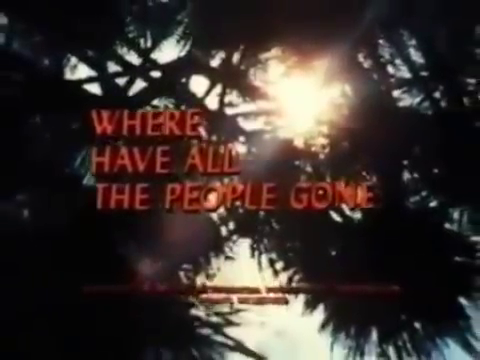
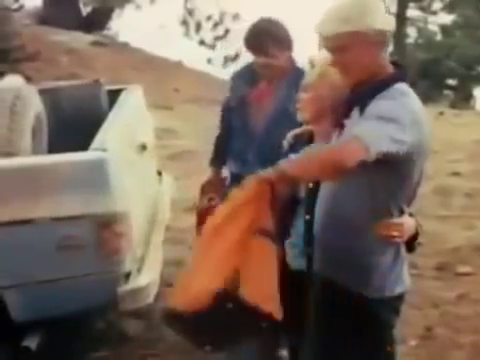
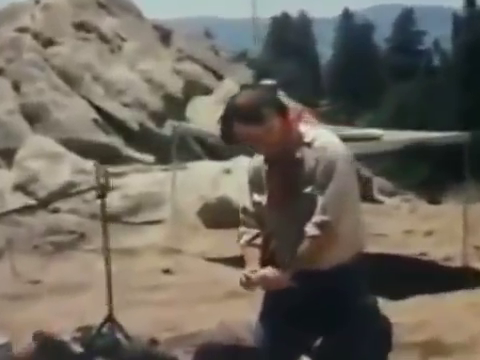
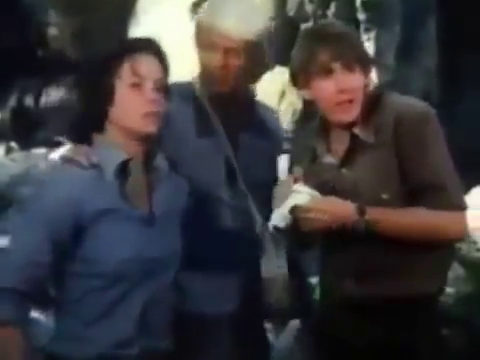
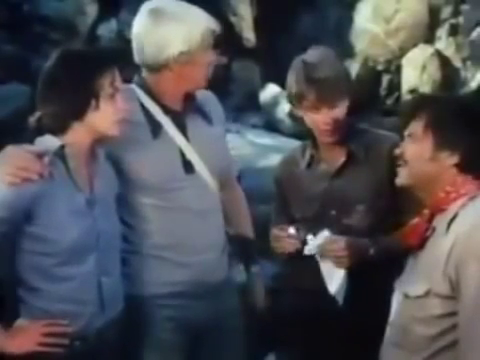
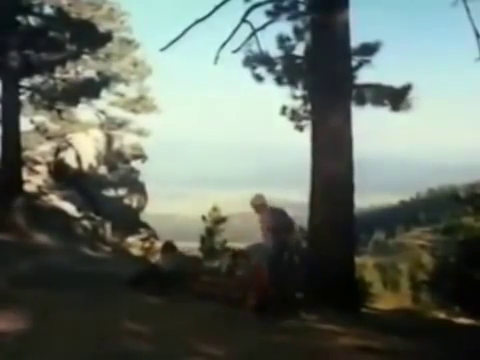
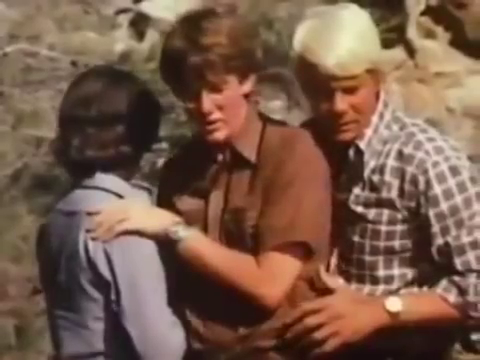
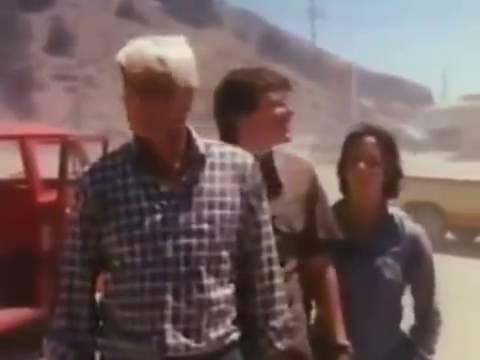
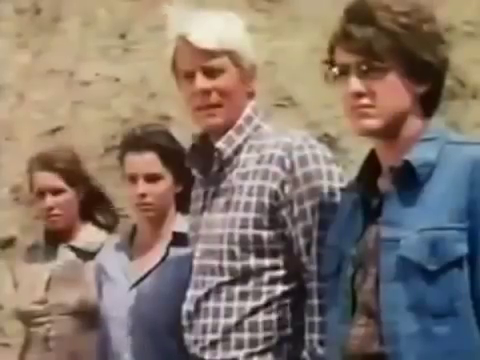
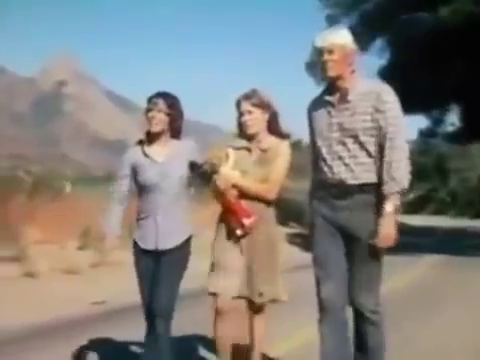
Where Have All the people Gone? (1974)
Film review #513
Director: John Llewellyn Moxey
SYNOPSIS: Steven Anders and his family are enjoying a camping trip in the mountains of California. While Steven’s wife, Barbara, returns home for work, the rest of the family stop and enjoy the remainder of their holiday. While exploring a cave, an earthquake strikes and they head outside to find that some form of solar flare has happened, and they can get no communicate with the outside world. The family head home to try and find Barbara, finding that almost everyone in the world has vanished, leaving only white powder where their bodies once were…
THOUGHTS/ANALYSIS: Where Have All the People Gone? is a 1974 TV movie. The film focuses on Steve Anders and his family, as they are on a camping trip in the Californian mountains. Steve’s wife Barbara has to return home for work reasons, leaving Steve, their two teenage children, and a local farm-hand. The family are down in a cave when an earthquake hits, and they escape to find the farm-hand outside that some form of bright flash happened in the sky at the same time. Unable to get into any contact with anyone, and with the farm-hand suffering what appears to be some form of radiation poisoning, the family try and get back home to Barbara, along the way finding that nearly everyone who saw the flash of light has died and become a heap of white dust. The story is focused around Steve and his family, and the people they pick up and encounter along the way. Initially starting with no answers, they slowly build up theories about what is happening, but their focus is always on getting home to their wife/mother. The film starts off pretty empty, and with characters that are very cookie-cutter and without personality, but slowly, they start to build up some particular responses to what is going on around them, and things start to pay off. The different scenes are a bit hit-and-miss: sometimes they work, sometimes they don’t. As such, the film can feel a bit uneven and disjointed. I don’t think there’s too much original in the film’s portrayal of a world where everyone has disappeared (an idea not unfamiliar to post-apocalyptic films), but it also avoids the common depictions of post-apocalypse scenarios by tuning away from global nuclear fallout and focusing on a family drama. Given that this is a TV movie, which typically focus more on entertainment and action, it is a rare example of such a movie that instead takes its subject matter seriously without the frills.
As mentioned, the characters are very much plain, stereotypical cut-outs, but they do start to grow a little as the film goes on. Steve keeps his family together, while his son David is a science-based person, who unravels a little as the film goes on. Deborah doesn’t really have too much to do other than do some occasional narration (which doesn’t add too much), and the characters of Jenny and Michael, whom the family they pick up along the way, have small, but interesting character arcs that adds something of substance. By the end of the film, there’s some good dialogue and twists that have cohered the characters into a good unit, but they never fully shake off that mould from which they begin.
The open-ended nature of the film leaves us with no real answer about the state of the world and it’s survivors: all we know is about are the characters we travel with, and who they encounter, which says very little. This isn’t necessarily a bad thing, but might not be for everyone who might want the journey to have a more substantive pay-off. When we are given explanations to what is going on, the science seems a bit far-fetched, such as people being turned into white dust being caused by a large solar flare and a particular dominant gene is a bit much the more you think about it. Again, like most things in this film, if you don’t think too much about it and focus on the characters and the depiction of the post-apocalyptic world, you have something that is mildly interesting to watch, if you give it a chance to get going. It’s nothing mindblowing or groundbreaking, but there’s some competency at work that brings the film together. In terms of TV movies, you can do worse, but you can certainly do better.
-
#512 – The Day of the Triffids (1962)
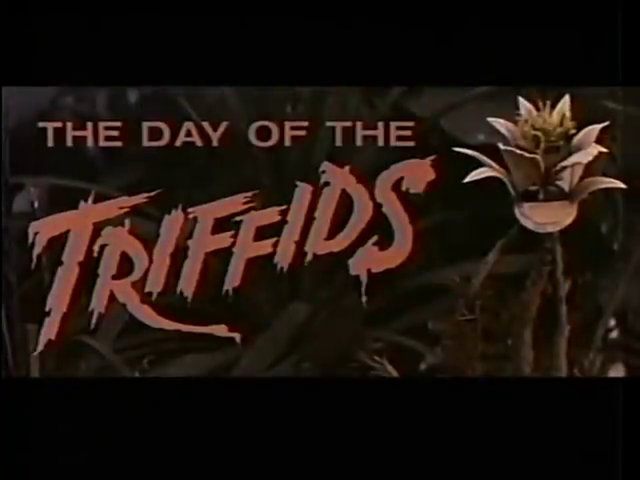
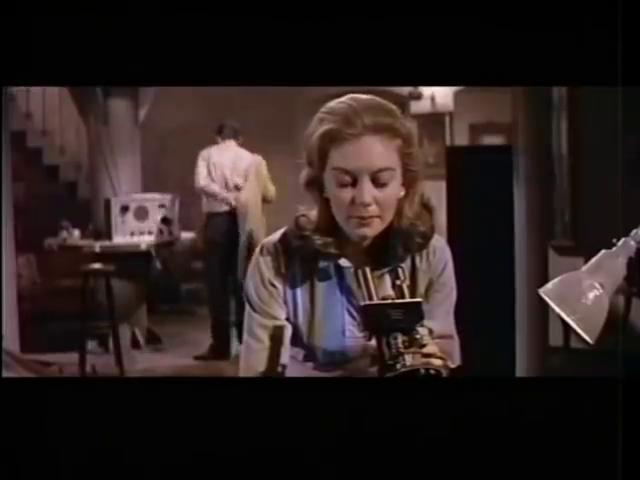
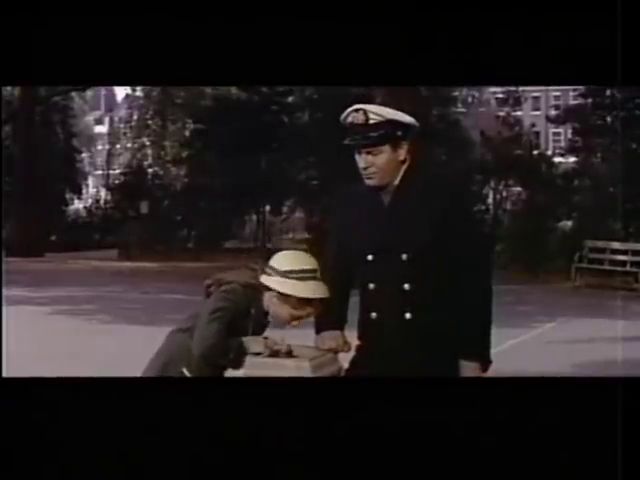
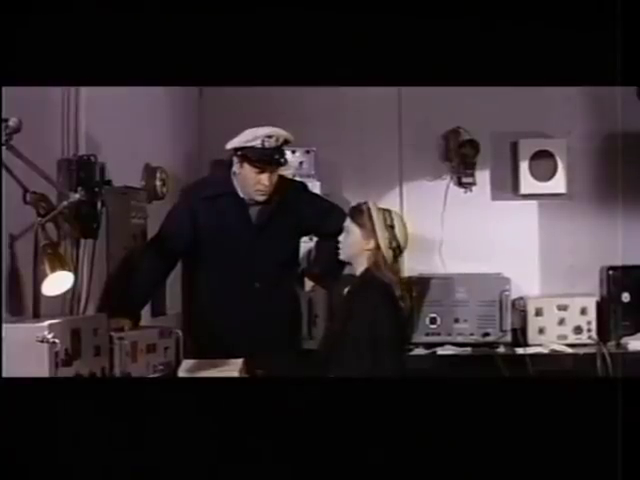
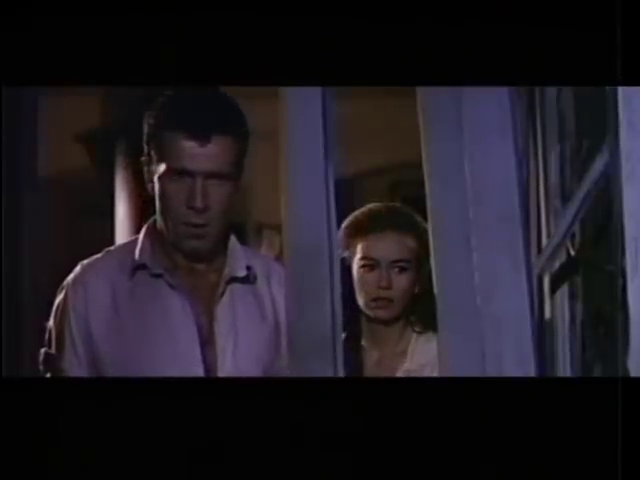
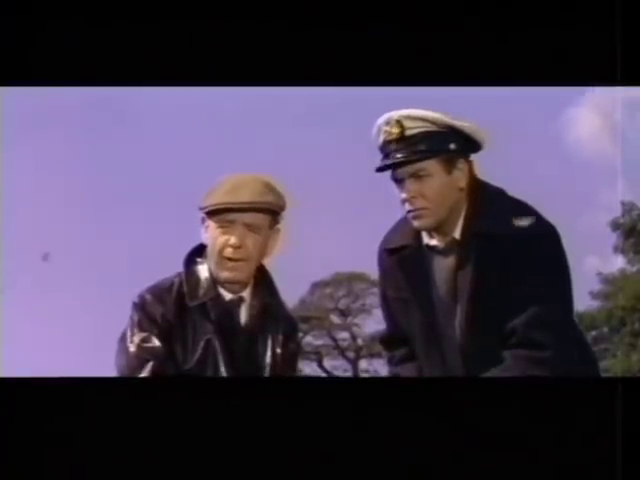
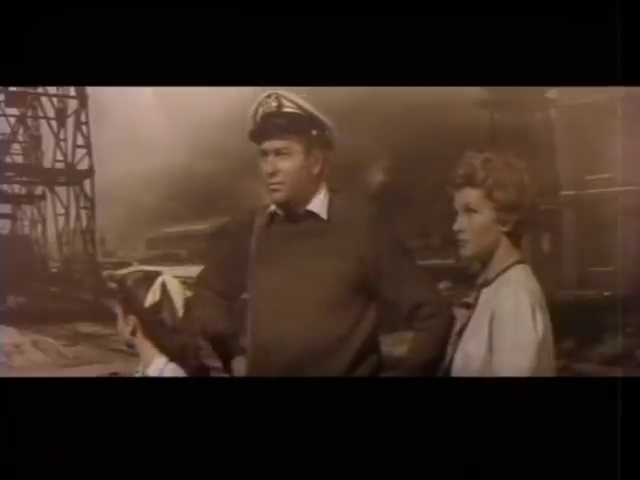
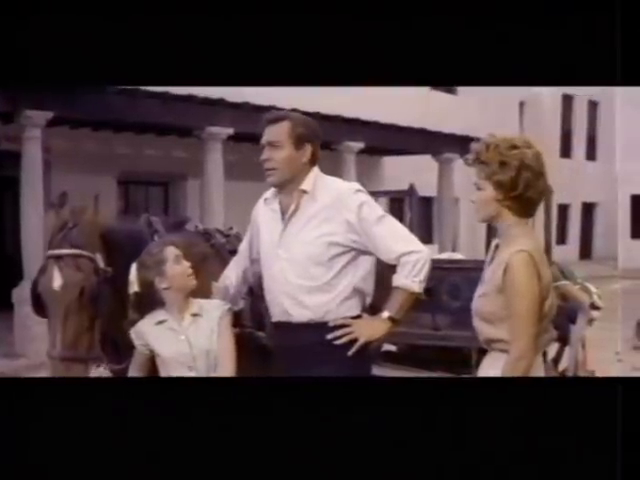
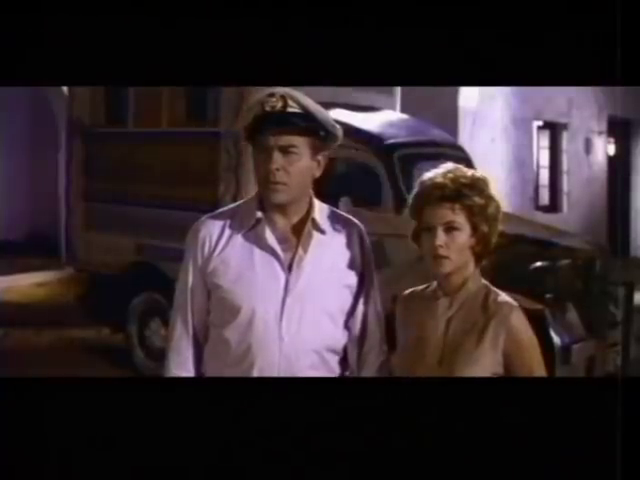
The Day of the Triffids (1962)
Film review #512
Directors: Steve Sekely, Freddie Francis
SYNOPSIS: After a meteor shower that is seen across the globe, nearly everybody on Earth is blinded by it. Billy Masen, a merchant navy officer, avoids being blinded as he has had his eyes bandaged up from an operation. He takes off his bandages to find he is one of the few people in the world who has not been blinded, and also that the meteor shower has released a strange plant called triffids that are multiplying rapidly, and attacking people…
THOUGHTS/ANALYSIS: The Day of the Triffids is a 1962 sci-fi horror film based on the novel of the same name by John Wyndham. The film begins with introducing Bill Masen, A merchant navy officer, who is resting in hospital after an eye operation. While his eyes are covered up in bandages, a meteor shower seen across the world blinds almost everybody on Earth. Bill is unaffected because of the bandages covering his eyes, and wakes up the next morning to remove his bandages and find that everyone else around him has gone blind. This has caused not only to society to break down and all services and communications to cease, but also the meteors have released a strange species of plant called Triffids that can move and attack people. The film is a balance between a post-apocalyptic survival film, and also a classic B-movie monster movie, and for most part, it is balanced quite well. The tone of the film remains serious and desperate, without too much of that low-budget b-movie tone undoing it. There’s also a good balance between the two sides of the story presented to us, with Bill and those he meets trying to survive in the world, and scientists Tom and Karen Goodwin, isolated from the world at a remote lighthouse, try to investigate the triffids and find a way to stop them, separating the explanations and exposition from the drama-heavy story of Bill and those around him trying to survive. It should be noted though, that the film is not a particularly faithful adaptation of the book, as it moves some of the settings and omits some characters. There are other adaptations that are more faithful, so you may want to look there if you want something closer to the book.
Apart from the good balance of characters and tone, there’s also some good shots and settings that set the scene rather well. Shots of the streets of London and Paris deserted are rather striking, and the scenes exploring the fallout of everybody being blind, from mass panic and planes being unable to land gives us some dramatic moments with big consequences, but the main focus is on Bill and his group’s isolated struggle for survival. The triffids themselves look like a b-movie creature, but manage to be quite menacing and threatening at some points, particularly in one scene where you see a hoard of them amassing behind an electric fence.
The ending is perhaps the weakest part of the film, and again something that deviates from the original novel: it turns out that the triffids dissolve in seawater…and that’s it. The world is saved apparently. It’s an ending twist similar to The War of the Worlds, which released a film adaptation in 19053, and had the invading Martians unable to survive in the earth’s atmosphere outside of their protective environments. We’re not given an insight into how the world is meant to carry on with nearly everybody blinded, but I suppose Bill’s story has a solid ending with him and his cohort reaching safety. One other notable aspect of the ending is that some survivors who have been trapped in a submarine emerge, and…go to a church to give thanks for their survival. This is an odd choice for an ending, particularly because Wyndham was not a religious person, but a a fair few of these sci-fi horror films (The Day the Earth Stood Still springs to mind), where ultimately God and religion are shown to still be all-powerful in the face of science. It’s an ending that comes out of nowhere and isn’t necessary, but is not uncommon in films of this era. Overall, The Day of the Triffids has some good aspects to it: it benefits from having the structure of the novel to balance out the different aspects of the film, but becomes a lot weaker when it deviates from it. The Triffids are a fairly terrifying monster in particular scenes, and are more memorable than a lot of monsters, but their undoing is a little contrived and uninspired. A good example of a b-movie monster flick, with some post-apocalyptic elements that heighten the drama.
-
#484 – Grain (2017)
Grain (2017)
Film review #484
Director: Semih Kaplanoglu
SYNOPSIS: In a post-apocalyptic world where most of the planet’s soil cannot grow plants and food, the world is divided between the remnants of the cities, agricultural zones, and the inhospitable wastelands where nothing grows, separated by barriers that kill anyone that get too close. Professor Erol Erin, a seed geneticist, learns of a researcher whose thesis predicted the current genetic crisis, and sets out into the wasteland to find him and get answers about how to solve it.
THOUGHTS/ANALYSIS: Grain is a 2017 post-apocalypse film. In this post-apocalypse, we see that society is divided into the remnants of the cities, and the agricultural zones, each ruled by powerful corporations and elites. There is also the wastelands, which makes up the majority of the planet, and is populated by genetically incompatible people who suffer the harshness of the inhospitable environment. Separating them are giant energy barriers of some sort that kill anyone that touches them, maintaining the gap between the elites and the rest firmly maintained. We don’t get much more insight into the state of the world than this, but it’s setup is fairly familiar to the post-apocalypse setting, so it’s not really an issue. The cities are facing an issue where seeds and crops are unable to grow, which will turn into a full crisis if the situation worsens; the film gives some scientific jargon as to why this is happening about missing particles and stuff, but its all a bit superfluous. Professor Erol Erin, a seed geneticist, wants to find a man whose thesis predicted the crisis and how to solve it, but he has apparently disappeared into the wastelands. He illegally sneaks through the barrier and sets off in search of Cemil, who he believes can put a stop to the crisis. The film’s story is deliberately threadbare, in order to keep things open to interpretation in some way, and as such, situates itself in the vein of the more epic films like Tarkovsky’s Stalker. There are, however, a number of problems with this: the film is very front-loaded and gives a lot of time in the first half to explaining everything, and the second half in mostly silence, and the contrast splits the film in a messy way. In a similar vein, it feels like it wants to be one of those epic films, but at the same time appeal to a more Western sensibility. The runtime at just over two hours fits into a more (slightly longer) Hollywood film, but a bit too short for the longer epic films. Even as it is though, the film feels too long with very little reward for getting through it. The long scenes filled with silence are often good, but the film as a whole just doesn’t offer anything to think about or tie it all together. The film is based on a chapter in the Quran apparently, and while I can’t speak to that, maybe there’s a religious allegory in there that I’m missing. The message of the film seems to be that mankind is far too wasteful and careless about the environment and the world in which it lives, but to deliver that message in a film released in 2017 is hardly groundbreaking or impactful unless you have a really clever way to do it. Grain does not have that.
The film mostly centres around two characters: Professor Erol Erin, a scientist from the city, and Celim, a man who has abandoned the city for the wastelands. The two journey off into the wastelands together, as Erol tries to survive Celim’s eccentric actions and behaviour. Erol finds Celim in order to learn something, but what Celim tries to teach him is not what he expects: he is less about giving answers, and more about a process of care and concern for mankind and their environment. The long scenes of almost pure silence accomplish that in some way, with said silence taking the place of any answers as the pair traverse the wasteland. There are some scenes that stand out, but the film ultimately feels like it goes nowhere. The acting is fairly decent, and so are the minor characters, but we see far too little of them for them to have any impact, and just leave us with more questions.
The film is entirely in black and white, and again this is a deliberate choice to evoke the kind of epic film it wants to be. Is it necessary? Not really. The scenes in the landscape of the wilderness are very grand and empty, emphasising it’s silence and deadness. It’s clear that Grain has a vision of what it wants to be and how it wishes to approach its subject matter, but it is almost entirely obfuscated and mixed up in its execution, leaving very little impact overall. There are some good scenes in here, and again, clearly a message that is trying to be communicated while also being open to interpretation, but it seems every time it needs to be clear, it becomes ambiguous and vice versa. The film is trying to say a lot, but never pushes itself firmly into that epic category of long films that accomplish this. As such, the execution finds itself far behind where it’s ideas want it to be.
-
#474 – A Visitor to the Museum (1989)
A Visitor to the Museum (1989)
Film review #474
Director: Konstantin Lopushanky
SYNOPSIS: In a seemingly post-apocalyptic world, a man visits the shoreline from the city to visit a museum that is only accessible one week every year when the tide is low enough. He is following the rumour that somewhere inside is a portal to another world, where one can escape the hell that is the one he lives in has become…
THOUGHTS/ANALYSIS: A Visitor to the Museum is a 1989 soviet post-apocalypse film directed by Konstantin Lopushanky. The film is set sometime after an unspecified ecological disaster has ravaged the planet: many people have become mutants and are locked up in reservations to be used as slave labour and such, while what remains of the unmutated live in cities. We aren’t given too much detail on the state of the world or what happened to it, but the backstory isn’t really important: like a lot of post-apocalypse films, how the world ended doesn’t mean much when you’re just trying to survive day-to-day in a new harsh world. A man visits the coast from the city hoping to visit a museum of relics from the old world buried beneath the sea. The path to the museum is accessible only once a year when the tides are low enough, and the man is following a rumour that within the museum is a portal to another world to escape the horrors of the one he currently lives in. The story of the film is very abstract and never hinges on definitives: a lot of the plot is casually explained as the man has tea with the family he is staying with, and they talk about the state of the world as very much matter-of-fact, in contrast to the true hell that the mutant “degenerates” are constantly experiencing.
Konstantin Lopushanky, the director of this film, worked on Andrei Tarkovsky’s Stalker film, and it definitely shows: the themes of isolation and desolation in a post-apocalyptic world and trying to find a way out are shared between the two, and there are very similar camera techniques and effects used to convey this. Lopushansky, however, always feels like Tarkovsky’s apprentice, and never really surpasses the master that is Tarkovsky, or offer anything different. The weak links in the film are definitely how the story reveals itself, and offers very little direction or clue to what is going on. Obviously, the film is meant to be ambiguous and centres around a loss of meaning in the post-apocalypse, but the film feels a bit too ambiguous in centring the main character and certain aspects of the film so you never know where they are or what’s going on. The plot points that do offer something include the contrast between the unmutated, who are unbothered atheists, and the God-fearing “degenerates” who scream out bible verses and quotes, even though none of them know what any of it means because the meaning of the bible has been lost.
The production of the film feels very considered, and again obviously taking inspiration from Tarkovsky. The outdoor location shots looks great, particularly the mountains of garbage and rubble that our protagonist traverses, which is apparently what most of the world looks like now. The landscape shots that emphasise the isolation of the protagonist abandoned amidst nature also works well. There’s also the large crowds of mutants in certain scenes give off an eerie feeling, as they move and act in seemingly genuine terror. Lopushansky uses the colour red to completely light many of the scenes, and it provides a good bit of consistency throughout.
This is definitely not a feel-good film: it is the end of the world, and we’re meant to feel it, the only hope of escape is this absurd rumour the protagonist is chasing about a portal to another world, which as the only option, shows just how bad things are, but again the unmutated just sitting around and discussing over tea as just a simple matter-of-fact furthers that strange contradiction. Overall, Visitor to a Museum definitely tries to capture some of that Tarkovsky magic of slow, epic films, but it never really hits the mark completely, nor does it offer anything new or original to the Tarkovsky formula. It’s not a bad film, and it received some decent recognition and awards, but again falls short of the master due to leaving things too ambiguous and without direction.
-
#461 – Ninja Apocalypse (2014)
Ninja Apocalypse (2014)
Film review #461
Director: Lloyd Lee Barnett
SYNOPSIS: in the post-apocalyptic wasteland, a summit is called between the various ninja clans for peace talks, as clan leader Fumitaka believes the clans must come together to overcome an external threat that threatens all of them. The clans agree to the terms, but Fumitaka is suddenly assassinated, with witnesses saying that Cage, leader of the Lost Ninja clan, was the one who did it. Cage and his fellow clan members are forced to flee, and must find a way out the bunker where the peace talks are being held, with all the other ninja warriors out to get them…
THOUGHTS/ANALYSIS: Ninja Apocalypse is a 2014 post-apocalypse martial arts film. Set after the collapse of society through nuclear war (as with most post-apocalyptic films), what remains of humanity seems to have banded into various ninja clans (for some reason). Fumitaka, the leader of one of the clans, holds a peace conference between the clans at his bunker, where he claims they must unite to fight an “external force” that threatens them all. The clans agree, but Fumitaka is suddenly assassinated, and three witnesses claim it was Cage, the leader of the Lost Ninja clan, that did it. Cage and his clan ninjas flee, attempting to escape the bunker while fighting off the remaining clans. The story is fairly simple to follow, even if it doesn’t make much sense: why is everyone a ninja in the post-apocalypse? Why do they have magic powers? Are they mutations or supernatural? Not much is explained, but then again it is a martial arts movie, and doesn’t need too much explanation. The whole premise is very silly, and manages to get even sillier when it introduces zombies. Overall it’s not a story that will keep your interest, and while there’s a few twists and surprises, doesn’t offer too much.
The various clans of ninjas we see at the beginning of the film all have unique special powers, including lightning, fire and illusion. As mentioned, there’s no explanation of these powers and whether they are mutations or supernatural, but it’s not too much of a concern. Apparently their powers have a certain limit and have to recharge, but it’s mechanics are not explained any further. These abilities make the film a bit more over-the-top and unique, but they’re not utilised in a massive way to bolster the film as a whole into a unique experience. The characters themselves are a fairly typical bunch of tropes, with Cage and his brother Surge being at odds with one another forming the most notable relation between characters. Cage’s rivalry with Becker, leader of the fire-based ninja clan, is also fairly interesting, and it’s fun to watch them interact, but there’s too little of it. The big reveal of the villain at the end has little impact too because we see very little of Cage and the villain actually interacting, so we are left only with exposition to fill in the gap.
This is not a high budget production. The film is almost exclusively set in this nuclear bunker, which means there is no need for complex sets, and most of the action takes place in non-descript corridors, stairwells and industrial empty rooms. The CG is pretty basic stuff and probably something anyone could make in After Effects, but it’s not overused too much, and is mainly just to create blood splatter, which the film doesn’t linger too closely on (although sometimes the physics of the blood is noticeably off). The acting can sometimes be alright, but other times is very stuff and wooden, making the whole experience very uneven. The most important aspect of a martial arts film has to be the fight scenes, and the ones in Ninja Apocalypse are…fine I guess. The actual stunts and fighting are good, but the editing of them is often too sharp and ruins the flow. There’s plenty of variety though, from the various ninja clans and their unique powers to slicing up zombies. Overall though Ninja Apocalypse is a fairly forgettable affair with a threadbare story and limited characters. There’s a few decent stunts and fights, but they are ultimately hampered in their editing and composition. There’s not much to really take away from this film, apart from the premise should be much more interesting than what is delivered on screen.
-
#455 – Turbo Kid (2015)
Turbo Kid (2015)
Film review #455
Directors: François Simard, Yoann-Karl Whissell, Anouk Whissell
SYNOPSIS: In the post-apocalyptic world of 1997, a boy known only as Kid, who idolises the “Turbo Rider” comic book character, stumbles upon a girl named Apple, who starts following him around everywhere. When the local warlord Zeus starts pressing his terror across the wasteland, Kid discovers the remains of the real Turbo Rider, and along with them, the superhero powers he needs to take on Zeus himself…
THOUGHTS/ANALYSIS: Turbo Kid is a 2015 post-apocalypse sci-fi film, it is an expanded version of the six-minute short film T is for Turbo from 2006. The film is very much an 80’s retro-styled post-apocalypse film that were produced in overwhelming numbers throughout the decade (mostly inspired by the success of Mad Max). The film starts off introducing Kid, a teenage boy who lives in this wasteland by scavenging, and who idolises the comic book character “Turbo Rider.” One day he stumbles upon a bizarre young woman named Apple, who starts following him around everywhere. The pair get caught up in a fight with the local warlord Zeus. The story of the film is fairly straightforward and easy to follow, and while the stakes never seem to be too high, the focus is on the characters and their relations to each other, rather than saving the world. It definitely has that Mad Max feel in terms of the story, with minimal worldbuilding or lore into how everything was destroyed and how people survive in this world, which is more or less in keeping with the genre, which usually gives off an “end of history” vibe in that after the world is destroyed, the question of “why?” doesn’t have much meaning, particularly in comparison to the question of survival.
Kid stumbles upon the remains of the real “Turbo Rider,” and takes his superhero suit and laser blaster thing to become him, and this gives him the power to take on the villains. This also feels very much like another classic 80’s trope: the revenge flick, in which a wimpy teenage kid suddenly gets the power to take revenge on everyone that wronged them. The obscure film Laserblast (though released in 1978) is one that particularly stands out to me. This is also a very sudden realisation that Turbo Rider isn’t just a comic book character, but is apparently a real person in this universe, which is not hinted at all before this reveal. Perhaps it is a sign that a destroyed world has no need to remember superheroes. When Kid puts on the suit, he takes up the mantle of the superhero in this strange new world, and as his connection to other characters and his past is revealed. The cast of characters on the whole have their own personalities and roles, and while none of their characters are particularly noteworthy or unique, you get a sense of the entirety of their character, given that in a post-apocalyptic world, most people don’t have multi-layered personalities and interests, and instead rely on their base instincts to survive.
The 80’s aesthetic extends to the soundtrack, which is very synth-driven, and while the budget is fairly low for the film, the cheaper CGI also feels more suitable to its aesthetic. The majority of the film relies on practical effects, particularly in relation to the use of gore; and there is a lot of gore. This is also very much in keeping with the exploitation and revenge films of the time where those who have wronged our hero often end up being disembowelled or mutilated in some way. There’s a nice contrast between the colourful superhero element of the film and the excessive gore that again reflects an age of cinema when age ratings were all over the place. The practical effects of the gore lead to some pretty fun and absurd situations, particularly when the body parts land on someone’s head and a totem pole of severed torsos start piling up. It’s this sort of thing that makes the film quite creative. Turbo Kid is overall quite minimal in it’s story and world setting, but excels in some ridiculous and over-the-top special effects that create some visceral gore which equally nasty and funny. While there are many films that set themselves up as a love letter to the 80’s, Turbo Kid also follows that trend while not feeling like its not afraid to push itself further, and allowing itself not to be constrained by the usual tropes associated with it. The low budget I think hampers the ability to do something more grand and spectacular with the whole superhero element, but it’s a fairly decent film that has you connecting to the characters and immersing you in familiar tropes that are comfortable and recognisable, but still able to throw in a few surprises.
